- Details
-
Last Updated: Tuesday, 21 July 2020 03:55
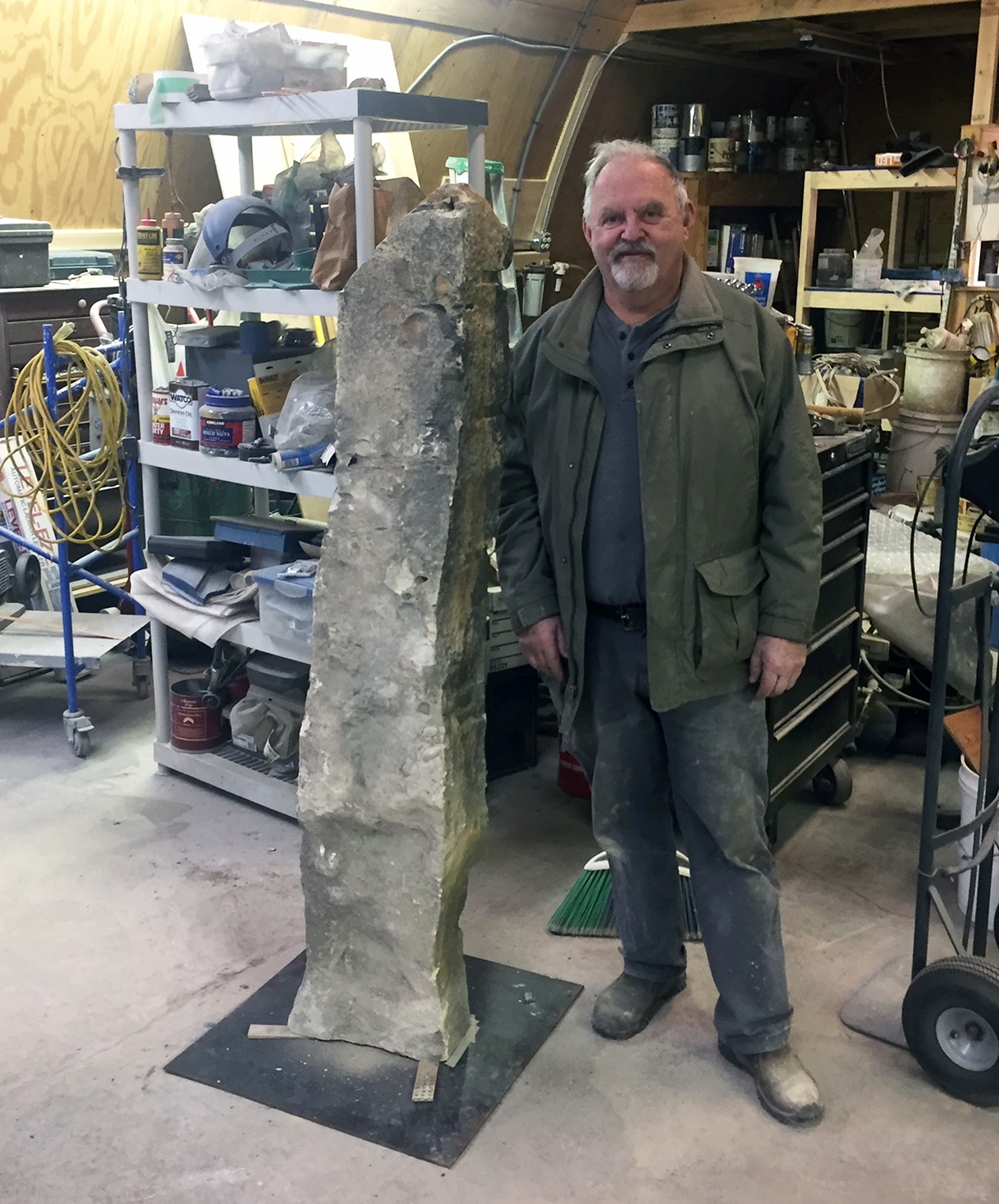 I have always been a person who likes to take things apart and find what lies hidden inside. Maybe that is what draws me to carve stone: the idea that there is something within waiting to be released. I have been hesitant to call myself a sculptor. Sculptors are those other people. I do this as a hobby, but by creating sculptures I have slowly been able to accept the idea that yes, I am a sculptor.
I have always been a person who likes to take things apart and find what lies hidden inside. Maybe that is what draws me to carve stone: the idea that there is something within waiting to be released. I have been hesitant to call myself a sculptor. Sculptors are those other people. I do this as a hobby, but by creating sculptures I have slowly been able to accept the idea that yes, I am a sculptor.
This transformation has taken me most of ten years, about 18 sculpture symposiums, and about 30,000 miles of driving. Almost always, John Thompson, my friend and the person who started me down this path, has been right there in the truck helping with driving, loading, talking, and listening. Through the years, going to and coming home from these camps, we have talked and dreamed of what next. How could we start a studio, work stone year-round, feed off each other’s ideas and excitement, and maybe even teach others?
Read more ...
- Details
-
Last Updated: Wednesday, 11 March 2020 19:57
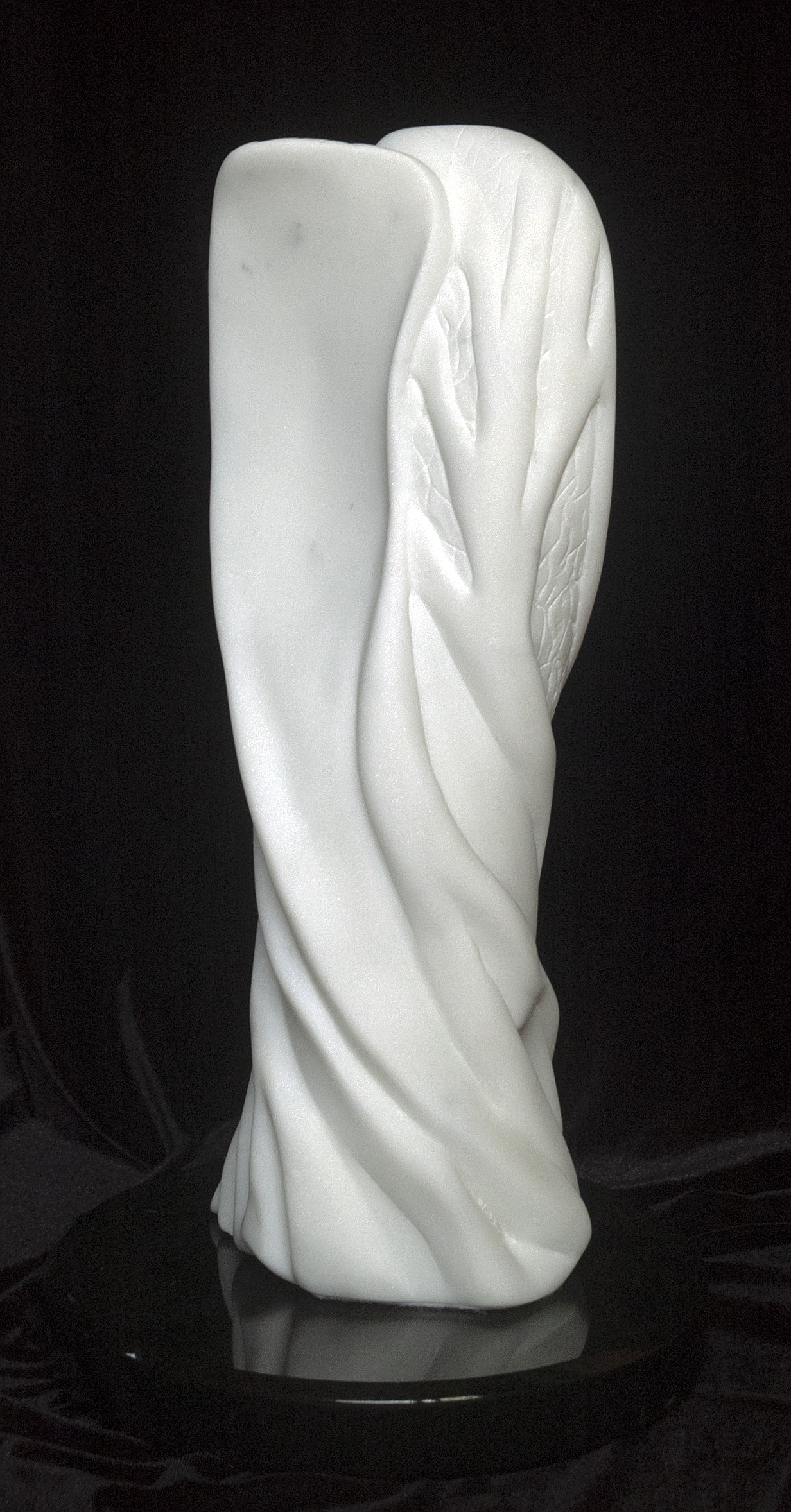 I am a maker and creative being to the core. I have painted, woven, felted, sculpted, sketched, and more, but still hadn't thought of myself as an artist. I knew that I needed to create in order to stay balanced and centered in my life. Art was more of a by-product of what I was doing — whether that was cooking, baking, gardening, or basket-weaving, art would infiltrate in as a driving philosophy, both consciously and subconsciously. Growing up in California, I took art classes in high school and entered college as an art major. Intimidated by the art world, I quickly switched majors and ended up getting a degree in Cultural Ecology with an emphasis in agriculture and became a gardener and herbalist by trade.
I am a maker and creative being to the core. I have painted, woven, felted, sculpted, sketched, and more, but still hadn't thought of myself as an artist. I knew that I needed to create in order to stay balanced and centered in my life. Art was more of a by-product of what I was doing — whether that was cooking, baking, gardening, or basket-weaving, art would infiltrate in as a driving philosophy, both consciously and subconsciously. Growing up in California, I took art classes in high school and entered college as an art major. Intimidated by the art world, I quickly switched majors and ended up getting a degree in Cultural Ecology with an emphasis in agriculture and became a gardener and herbalist by trade.
 I spent the next few years working on Organic and Biodynamic farms in Indiana, New Jersey, and Tennessee. Eventually I landed on 150 acres in the backwoods of Tennessee where a lifelong dream of homesteading with a small community of friends was brought to fruition. Five years later, yearning for the waters and mountains of the Pacific Northwest, I ended up settling in Washington State on Lopez Island. I still live there today with my husband and daughter in the home we built. I did a lot of exploring and creating during this period but I didn’t do much classic ‘art.’
I spent the next few years working on Organic and Biodynamic farms in Indiana, New Jersey, and Tennessee. Eventually I landed on 150 acres in the backwoods of Tennessee where a lifelong dream of homesteading with a small community of friends was brought to fruition. Five years later, yearning for the waters and mountains of the Pacific Northwest, I ended up settling in Washington State on Lopez Island. I still live there today with my husband and daughter in the home we built. I did a lot of exploring and creating during this period but I didn’t do much classic ‘art.’
It was not until I was dealing with a medical condition in 2012 that I really opened up to art again. In the process surrounding my condition I thought a lot about the finite reality of life, and the dreams I still wanted to manifest. Sculpting stone was high on that list, so I contacted Tamara Buchanan, a local stone sculptor and long time NWSSA member. We scheduled a class a few weeks out. As soon as I put chisel to stone I was hooked, and have been carving stone ever since. Tamara has been my teacher, mentor and dear friend, sharing her studio, tools, and wisdom. Working with Tamara Buchanan, taking classes, participating in Symposiums and being a member of the NWSSA have all played very key roles in my development as a stone sculptor.
Read more ...

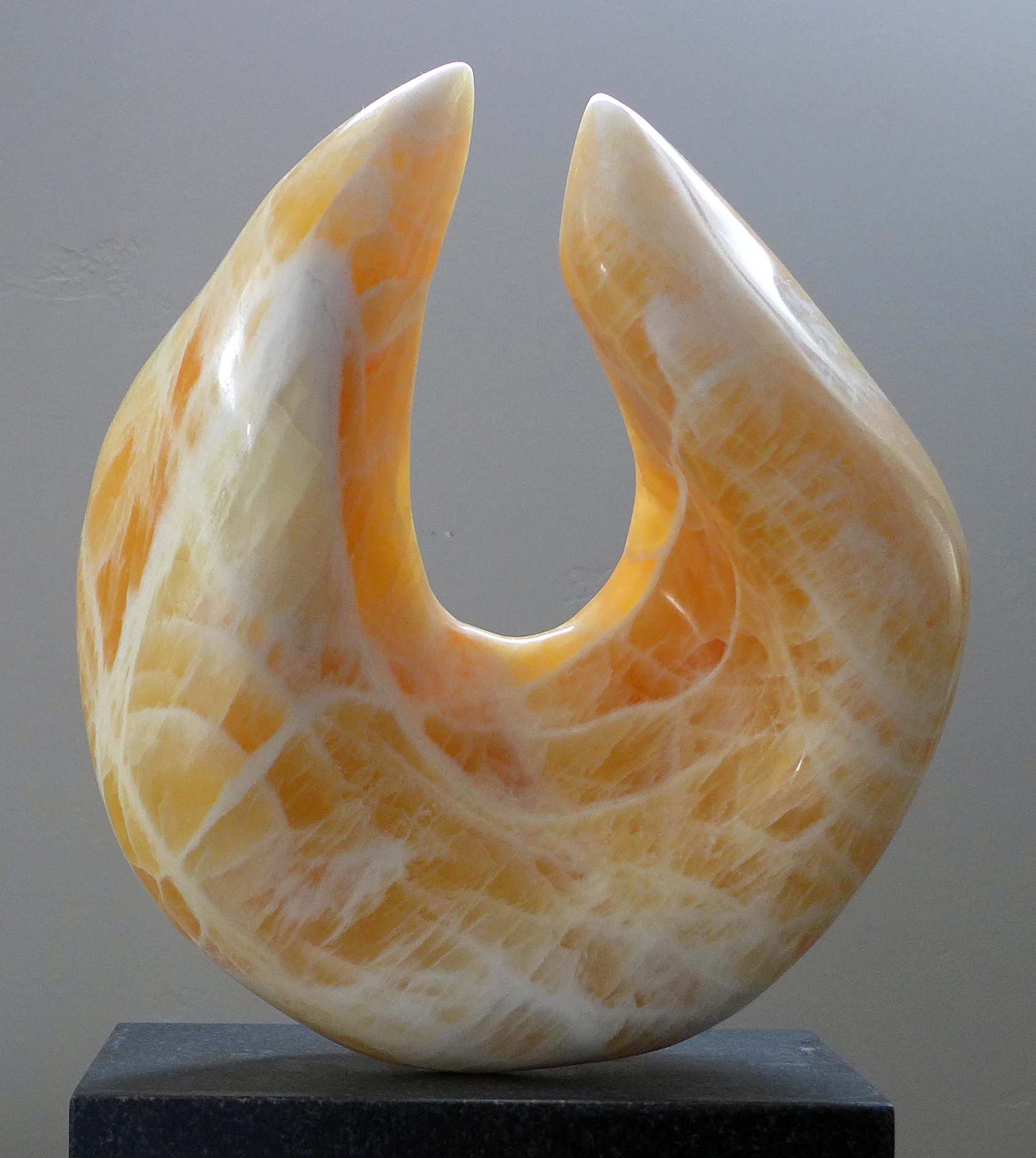


 Sadly, it wasn't until age forty-nine that I discovered sculpting at a community college in Salem, Oregon. The beginner’s dilemma was to then find stone and tools. When an artist at a local show said he collected his stone and made his tools, I married him! We just celebrated our twenty-fourth anniversary.
Sadly, it wasn't until age forty-nine that I discovered sculpting at a community college in Salem, Oregon. The beginner’s dilemma was to then find stone and tools. When an artist at a local show said he collected his stone and made his tools, I married him! We just celebrated our twenty-fourth anniversary.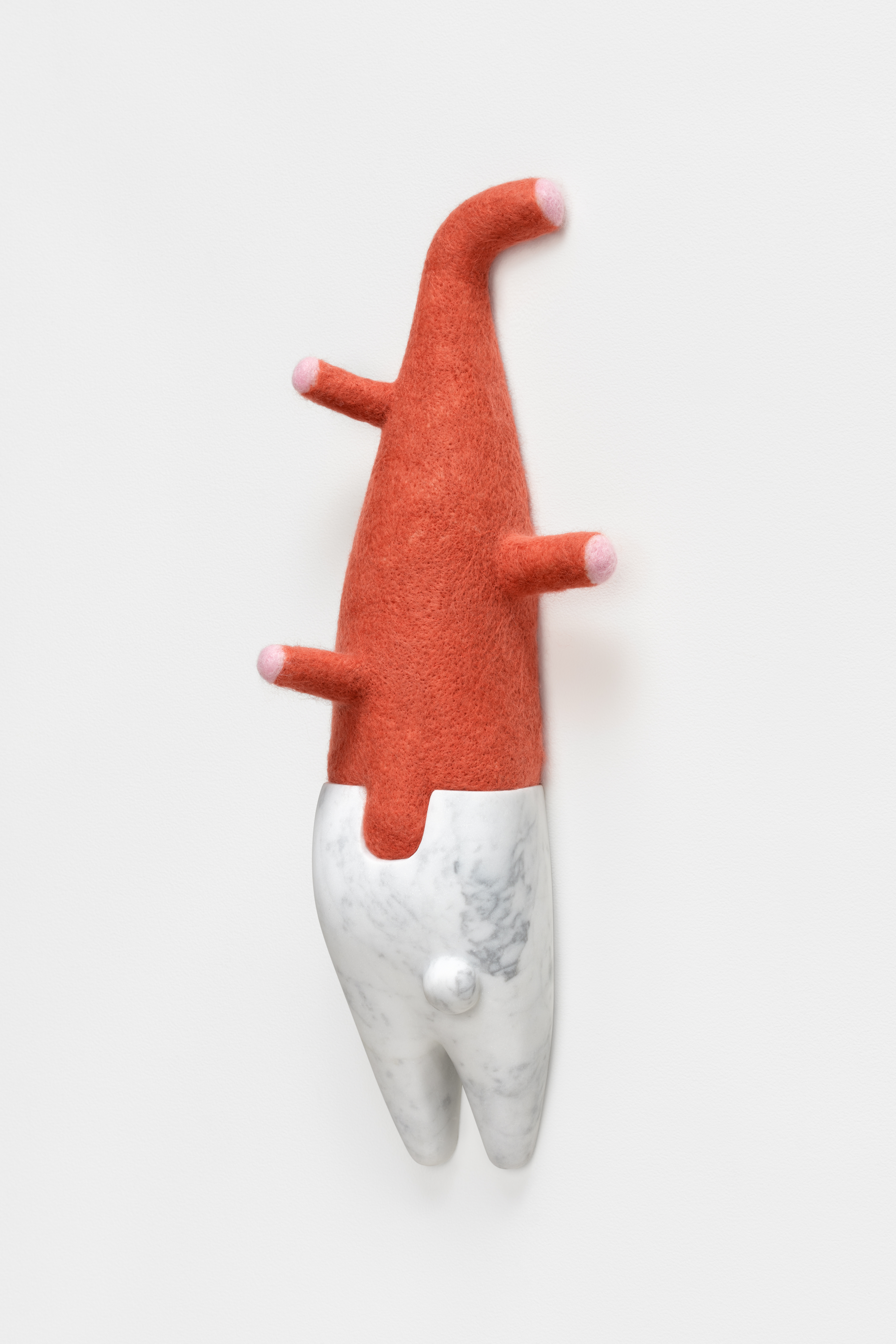 I am a first generation college student with not one but two degrees in sculpture. I feel this is important to mention because being a first generation college student allowed me the freedom to get a “useless” degree in art or whatever I wanted without any parental pressure. College simply wasn’t prioritized in my family; it was a place people went to lose their religion and thus not a destination my family wished me to set sights on. The only reason I actually ended up in college was due to encouragement and assistance from a puzzled high school counselor who couldn’t figure out why someone with a 4.0, enrolled in college prep courses, wouldn’t be planning on attending college.
I am a first generation college student with not one but two degrees in sculpture. I feel this is important to mention because being a first generation college student allowed me the freedom to get a “useless” degree in art or whatever I wanted without any parental pressure. College simply wasn’t prioritized in my family; it was a place people went to lose their religion and thus not a destination my family wished me to set sights on. The only reason I actually ended up in college was due to encouragement and assistance from a puzzled high school counselor who couldn’t figure out why someone with a 4.0, enrolled in college prep courses, wouldn’t be planning on attending college.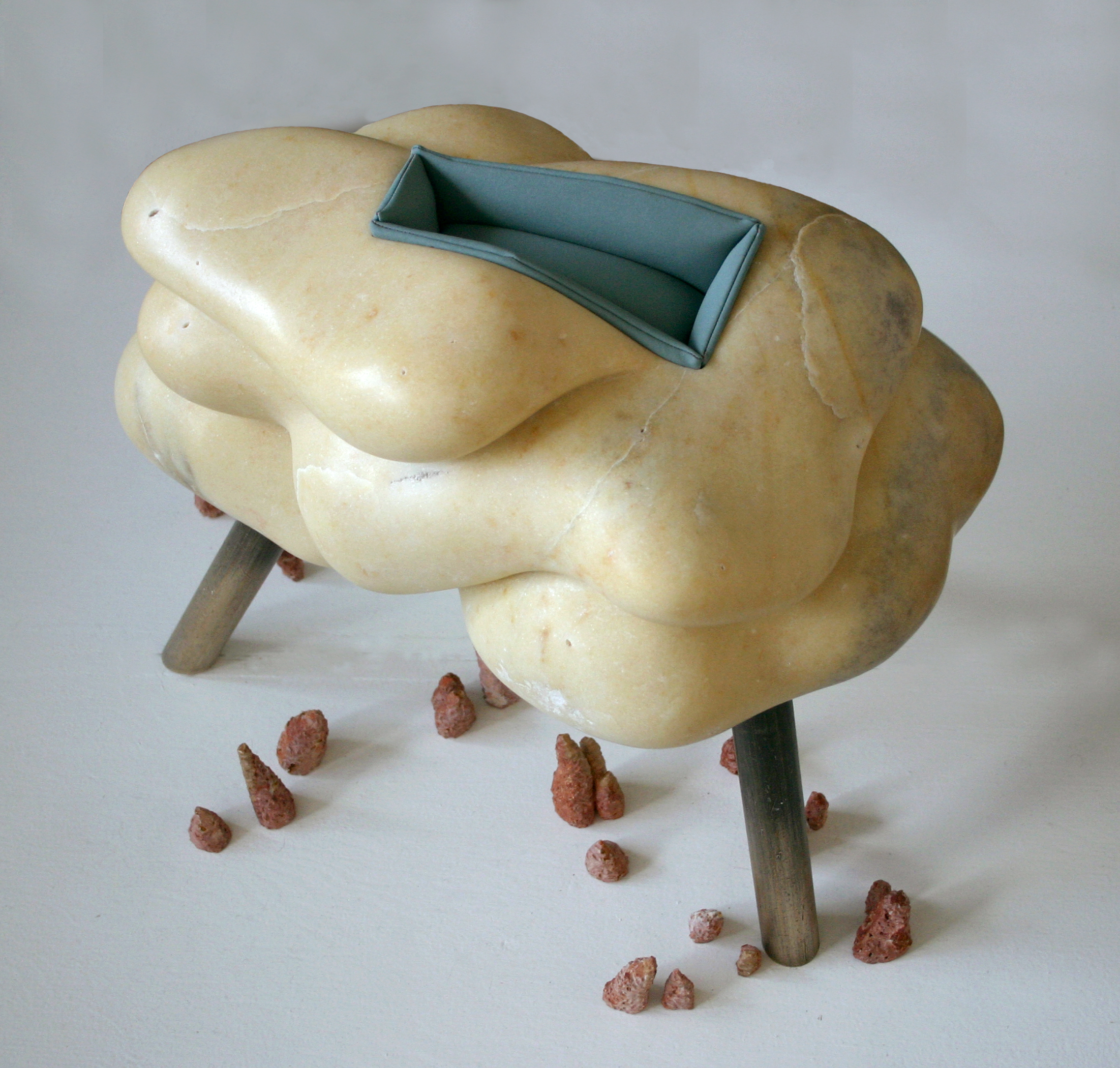 In college, I was required to take a sculpture course. I put it off until the last possible moment, completely clueless that it held my destiny. That first day of class, when my hands touched clay,
In college, I was required to take a sculpture course. I put it off until the last possible moment, completely clueless that it held my destiny. That first day of class, when my hands touched clay,
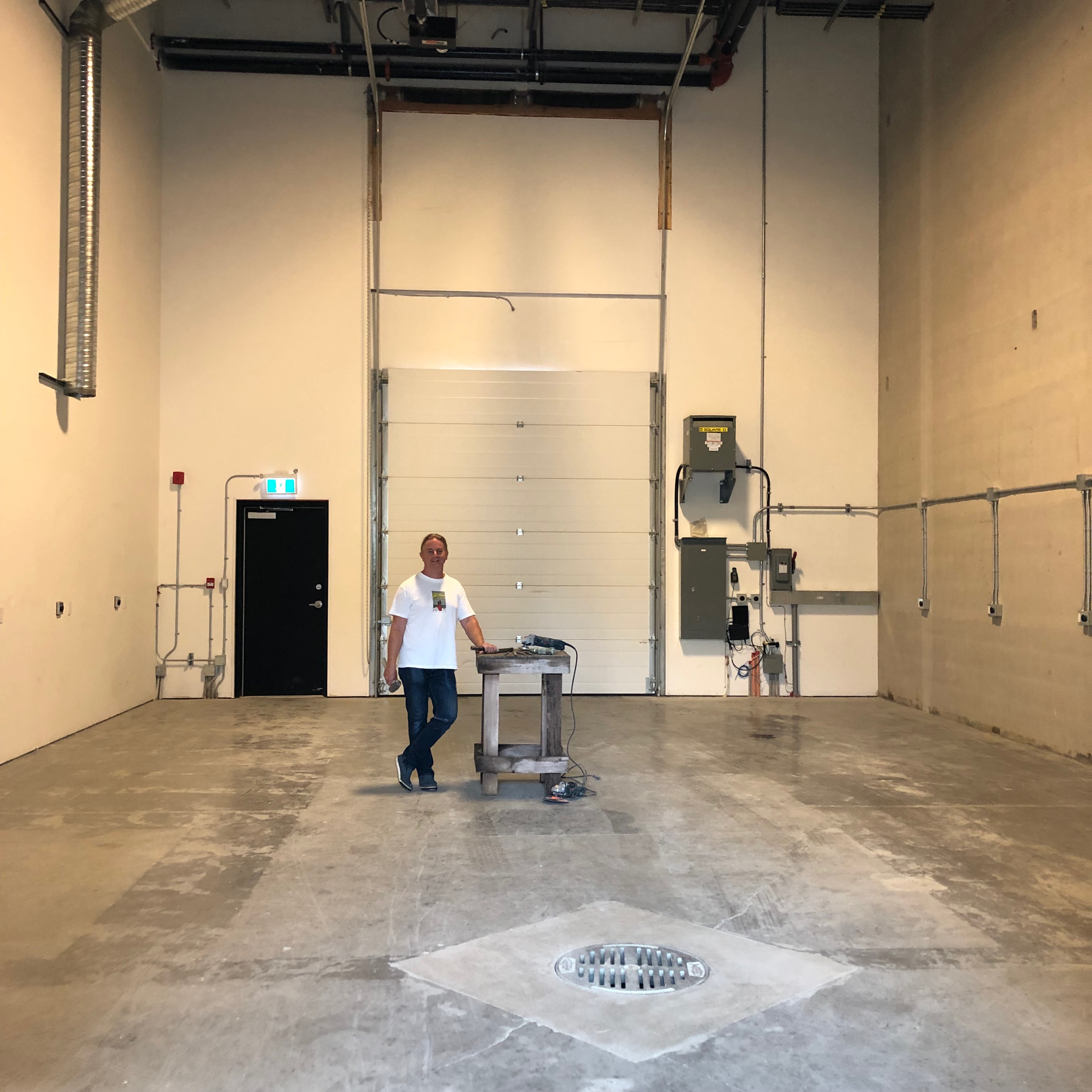
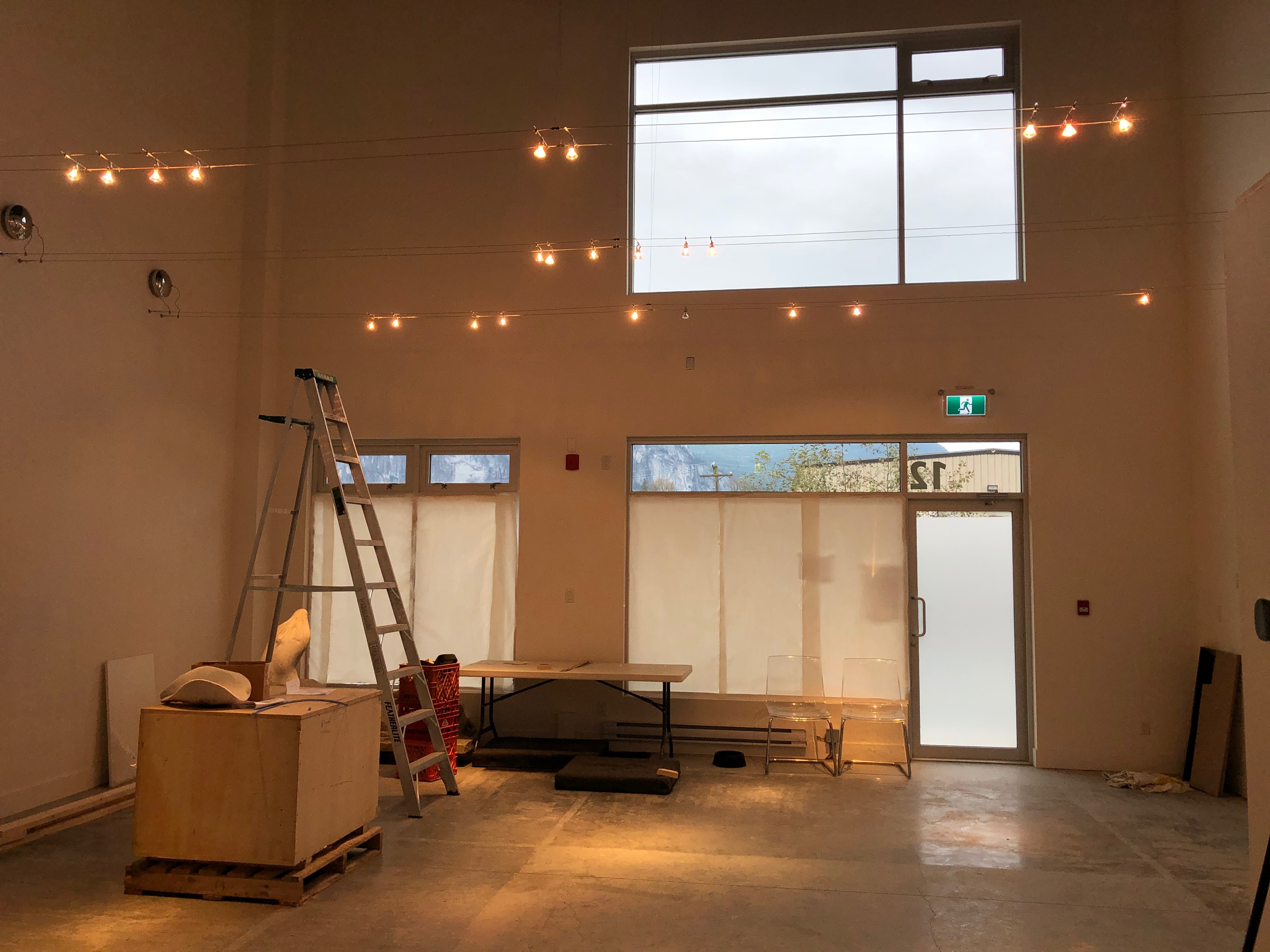 After our home and studio/gallery/sculpture garden of thirty-two years sold, I could no longer afford new digs for my studio in the Metro Vancouver, Canada area. Looking farther afield, I settled on a new-build industrial unit in the town of Squamish, about a forty-five minute drive north of Vancouver where our house is. I was to take possession in the fall of 2017, but due to construction delays, I got the keys at the end of February 2018. As Michelle and I had planned the year abroad to travel and work in Europe beginning in June, I decided not to move my equipment into the brand new unit. Instead, we found a non-art-related tenant to rent the space from us in our absence.
After our home and studio/gallery/sculpture garden of thirty-two years sold, I could no longer afford new digs for my studio in the Metro Vancouver, Canada area. Looking farther afield, I settled on a new-build industrial unit in the town of Squamish, about a forty-five minute drive north of Vancouver where our house is. I was to take possession in the fall of 2017, but due to construction delays, I got the keys at the end of February 2018. As Michelle and I had planned the year abroad to travel and work in Europe beginning in June, I decided not to move my equipment into the brand new unit. Instead, we found a non-art-related tenant to rent the space from us in our absence. 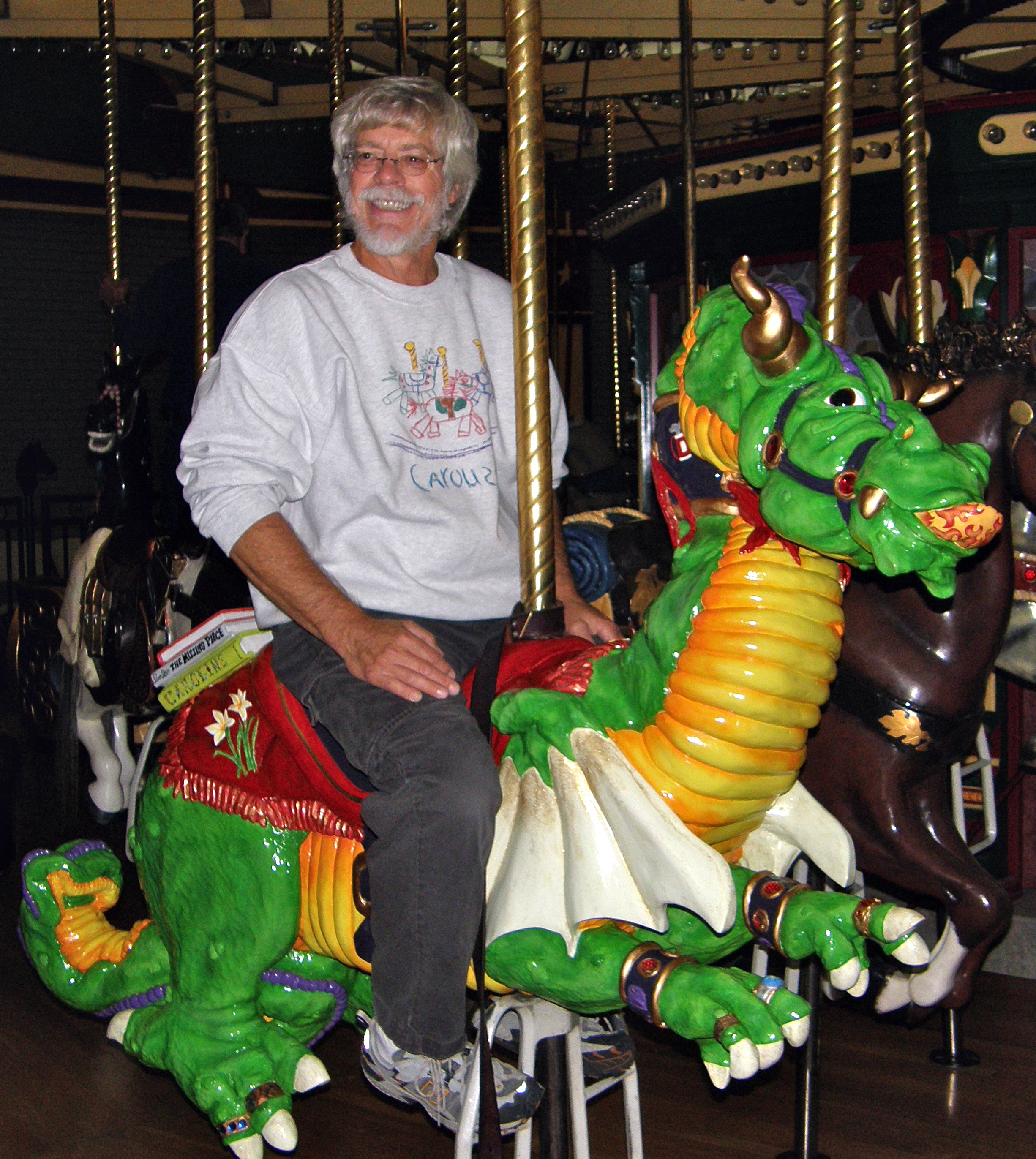
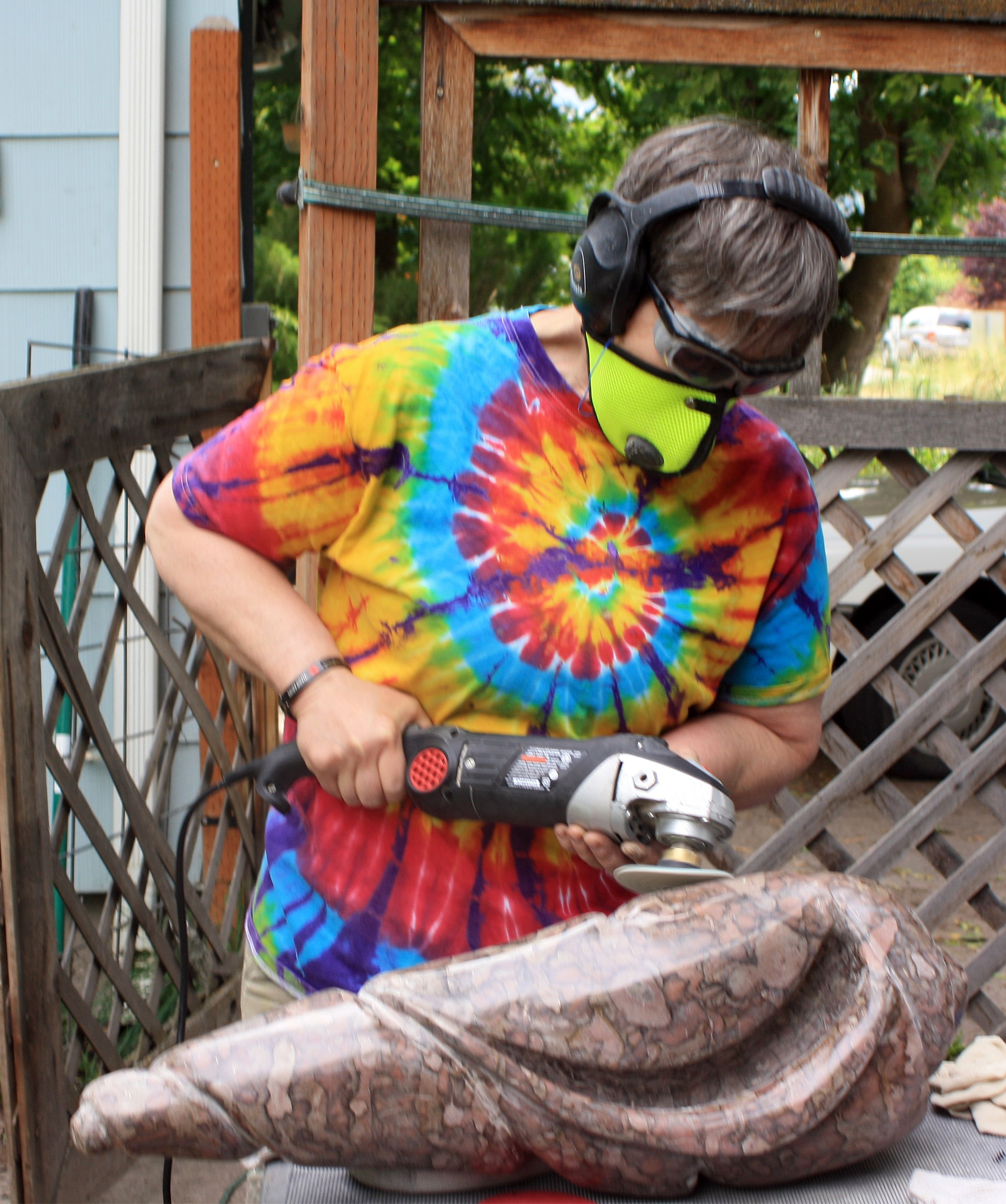 I can’t remember a time when making art has not been a part of my life. My dad commented once that I was born with a pencil in my hand, and he did so much to keep those “pencils” around me.
I can’t remember a time when making art has not been a part of my life. My dad commented once that I was born with a pencil in my hand, and he did so much to keep those “pencils” around me. I have always been a person who likes to take things apart and find what lies hidden inside. Maybe that is what draws me to carve stone: the idea that there is something within waiting to be released. I have been hesitant to call myself a sculptor. Sculptors are those other people. I do this as a hobby, but by creating sculptures I have slowly been able to accept the idea that yes, I am a sculptor.
I have always been a person who likes to take things apart and find what lies hidden inside. Maybe that is what draws me to carve stone: the idea that there is something within waiting to be released. I have been hesitant to call myself a sculptor. Sculptors are those other people. I do this as a hobby, but by creating sculptures I have slowly been able to accept the idea that yes, I am a sculptor. I am a maker and creative being to the core. I have painted, woven, felted, sculpted, sketched, and more, but still hadn't thought of myself as an artist. I knew that I needed to create in order to stay balanced and centered in my life. Art was more of a by-product of what I was doing — whether that was cooking, baking, gardening, or basket-weaving, art would infiltrate in as a driving philosophy, both consciously and subconsciously. Growing up in California, I took art classes in high school and entered college as an art major. Intimidated by the art world, I quickly switched majors and ended up getting a degree in Cultural Ecology with an emphasis in agriculture and became a gardener and herbalist by trade.
I am a maker and creative being to the core. I have painted, woven, felted, sculpted, sketched, and more, but still hadn't thought of myself as an artist. I knew that I needed to create in order to stay balanced and centered in my life. Art was more of a by-product of what I was doing — whether that was cooking, baking, gardening, or basket-weaving, art would infiltrate in as a driving philosophy, both consciously and subconsciously. Growing up in California, I took art classes in high school and entered college as an art major. Intimidated by the art world, I quickly switched majors and ended up getting a degree in Cultural Ecology with an emphasis in agriculture and became a gardener and herbalist by trade. I spent the next few years working on Organic and Biodynamic farms in Indiana, New Jersey, and Tennessee. Eventually I landed on 150 acres in the backwoods of Tennessee where a lifelong dream of homesteading with a small community of friends was brought to fruition. Five years later, yearning for the waters and mountains of the Pacific Northwest, I ended up settling in Washington State on Lopez Island. I still live there today with my husband and daughter in the home we built. I did a lot of exploring and creating during this period but I didn’t do much classic ‘art.’
I spent the next few years working on Organic and Biodynamic farms in Indiana, New Jersey, and Tennessee. Eventually I landed on 150 acres in the backwoods of Tennessee where a lifelong dream of homesteading with a small community of friends was brought to fruition. Five years later, yearning for the waters and mountains of the Pacific Northwest, I ended up settling in Washington State on Lopez Island. I still live there today with my husband and daughter in the home we built. I did a lot of exploring and creating during this period but I didn’t do much classic ‘art.’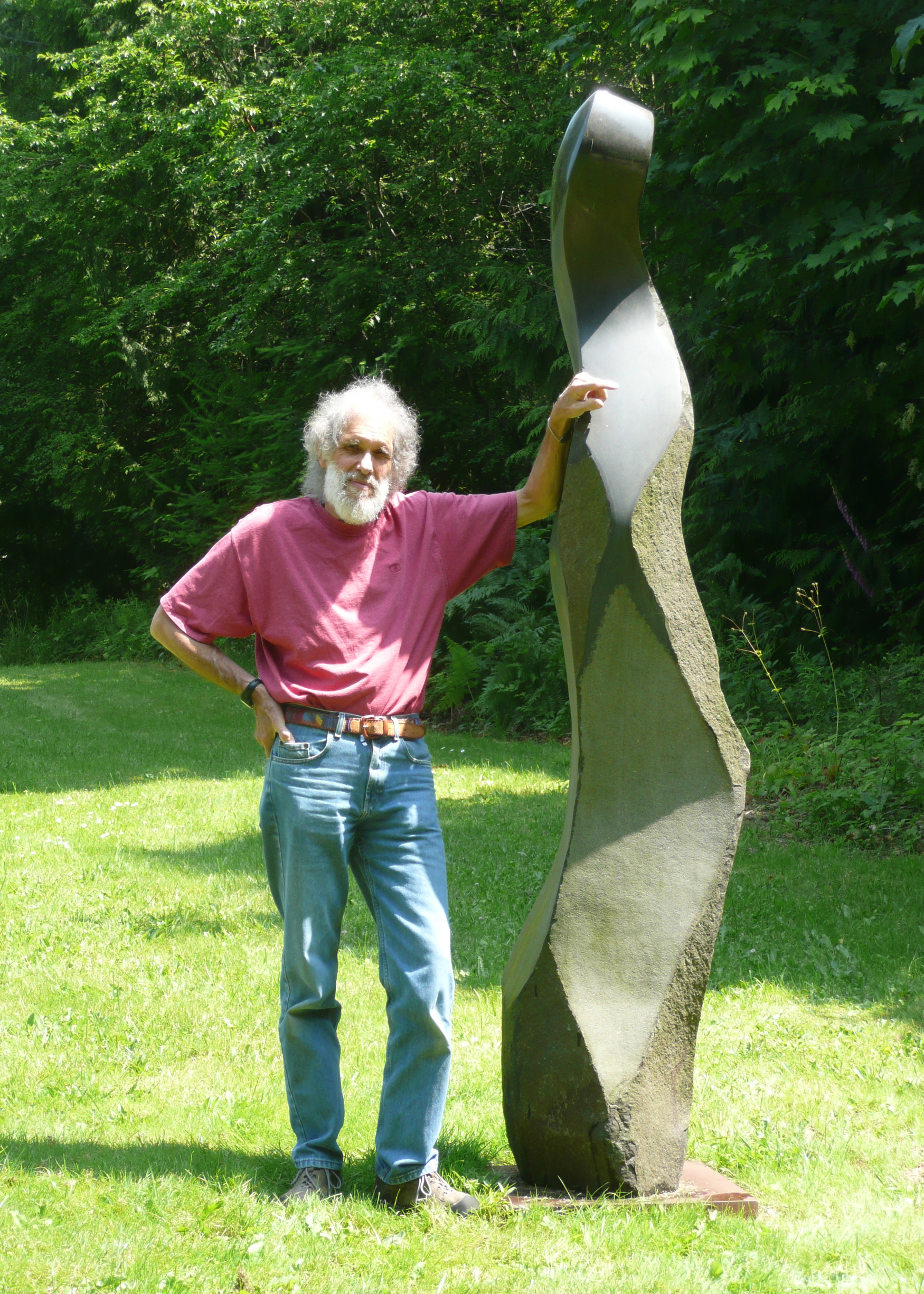 My first serious encounter with stone was a mixed-materials piece in 1982, featuring a 300-pound granite glacial erratic that I had dragged from the woods. Working on this piece got me totally hooked on stone and particularly on granite. Since my training was in metal casting and fabrication and I knew nothing about carving stone, I naturally decided to become a stone sculptor.
My first serious encounter with stone was a mixed-materials piece in 1982, featuring a 300-pound granite glacial erratic that I had dragged from the woods. Working on this piece got me totally hooked on stone and particularly on granite. Since my training was in metal casting and fabrication and I knew nothing about carving stone, I naturally decided to become a stone sculptor. 
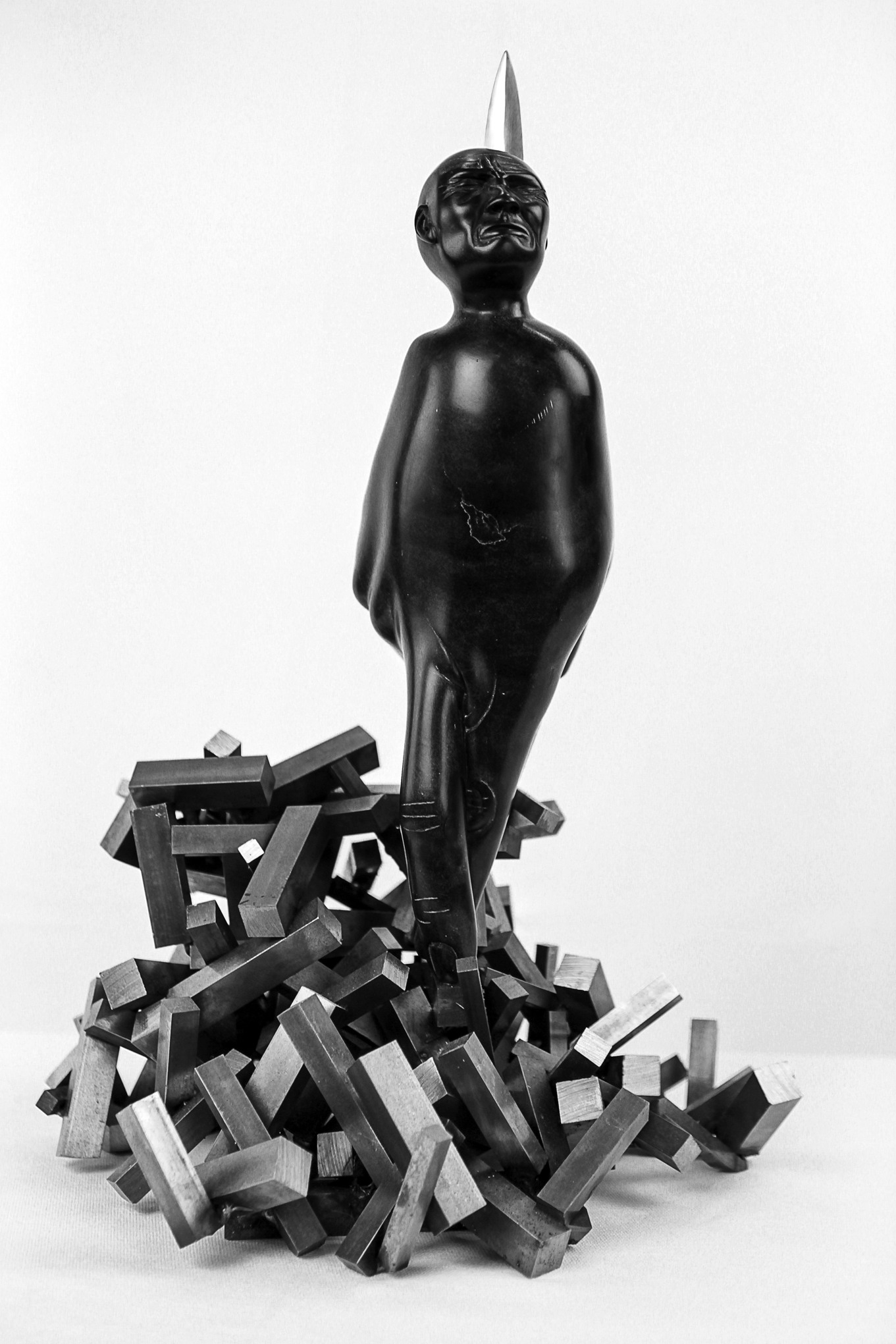
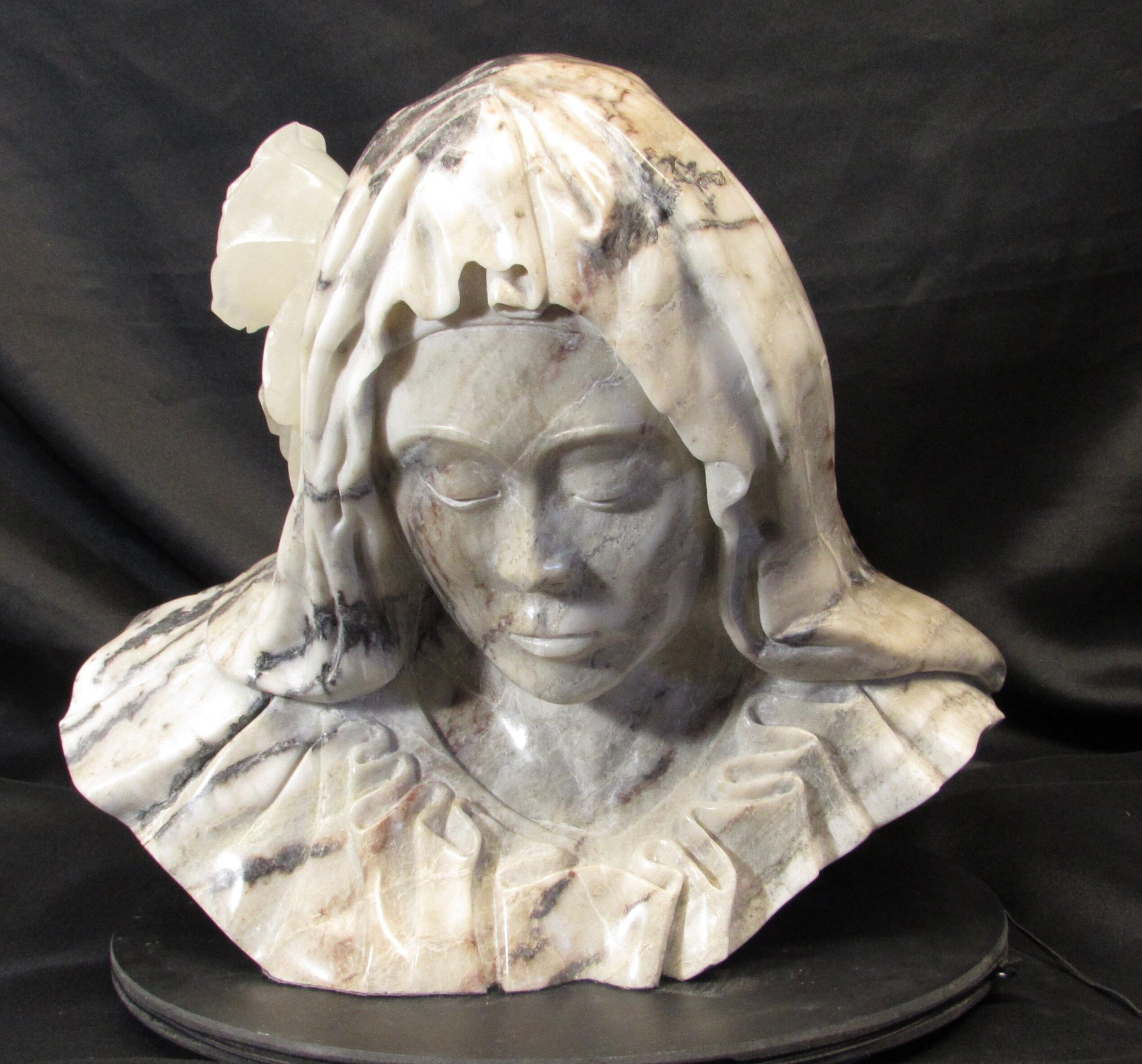 First of All
First of All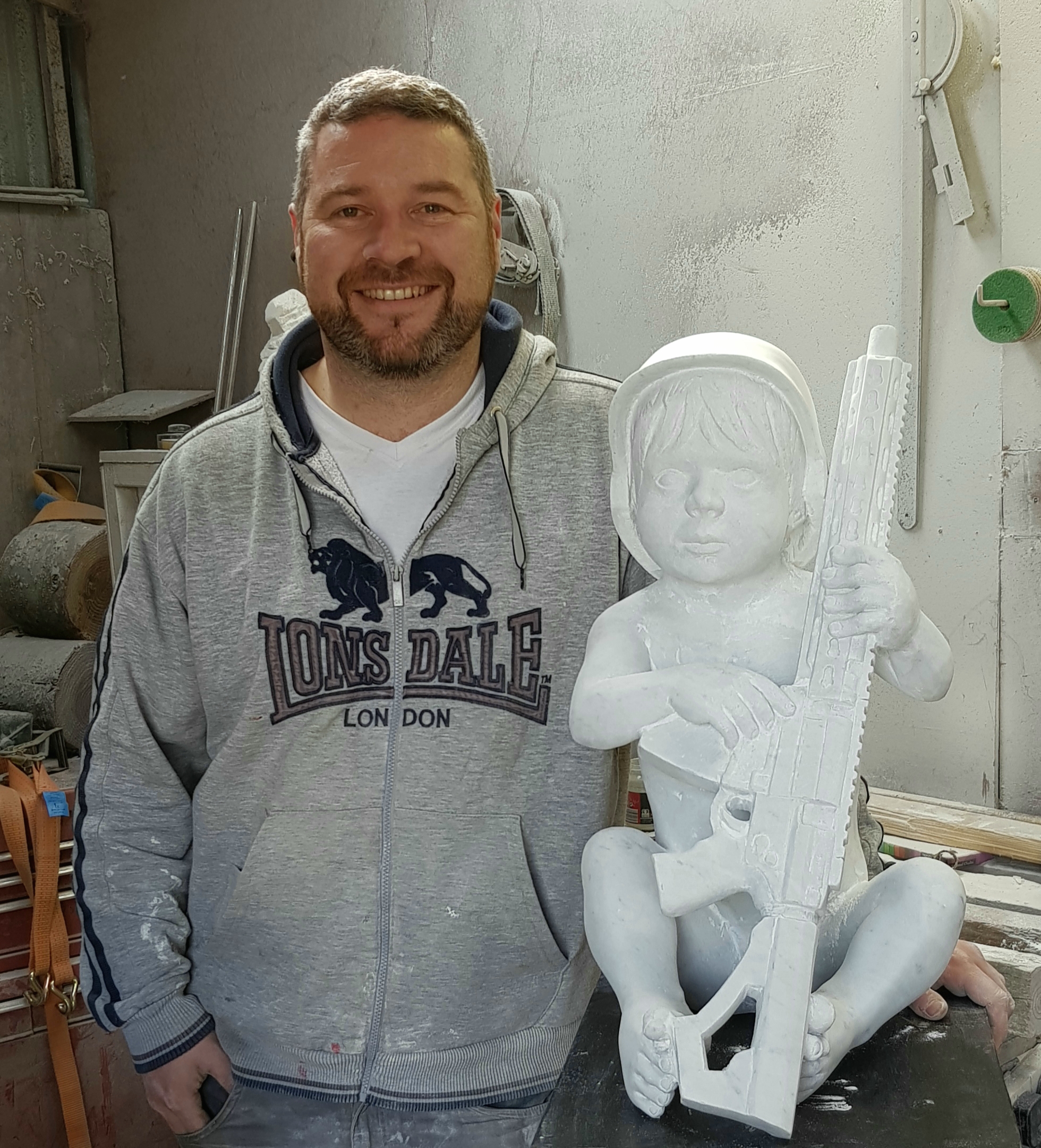
 When I first attended art school I thought figurative clay and bronze was what I wanted to do. Realistic figure modeling was it; I wanted to be like Rodin. But the art school had a stone carving area…. It did not take long to find my way there. The older students, equipped with hammers and chisels, were a frenzy of dust and noise. Their forms emerging from rocks. I was hooked. I remember my tutor asking, “Do you know Eric Gill’s work?” I said no and his eyes lit up, “you’re in for a treat.” He brought me straight to the library and found a book about Gill, then Jacob Epstein. It was an awakening. Gill, Epstein, Henry Moore, Barbara Hepworth and Henri Gaudier-Brzeska are still the strongest influence on the form and style of my sculpture. I have also found inspiration in my contemporaries, even the ones that don’t carve! In terms of themes and motif, I can find inspiration in anything from a Mother with a child, drunks fighting in the street and our species’ insistence on being at war. Swimmers and Icarus figures are currently holding my interest, they defy gravity. To make a stone look weightless is a wonderful challenge.
When I first attended art school I thought figurative clay and bronze was what I wanted to do. Realistic figure modeling was it; I wanted to be like Rodin. But the art school had a stone carving area…. It did not take long to find my way there. The older students, equipped with hammers and chisels, were a frenzy of dust and noise. Their forms emerging from rocks. I was hooked. I remember my tutor asking, “Do you know Eric Gill’s work?” I said no and his eyes lit up, “you’re in for a treat.” He brought me straight to the library and found a book about Gill, then Jacob Epstein. It was an awakening. Gill, Epstein, Henry Moore, Barbara Hepworth and Henri Gaudier-Brzeska are still the strongest influence on the form and style of my sculpture. I have also found inspiration in my contemporaries, even the ones that don’t carve! In terms of themes and motif, I can find inspiration in anything from a Mother with a child, drunks fighting in the street and our species’ insistence on being at war. Swimmers and Icarus figures are currently holding my interest, they defy gravity. To make a stone look weightless is a wonderful challenge.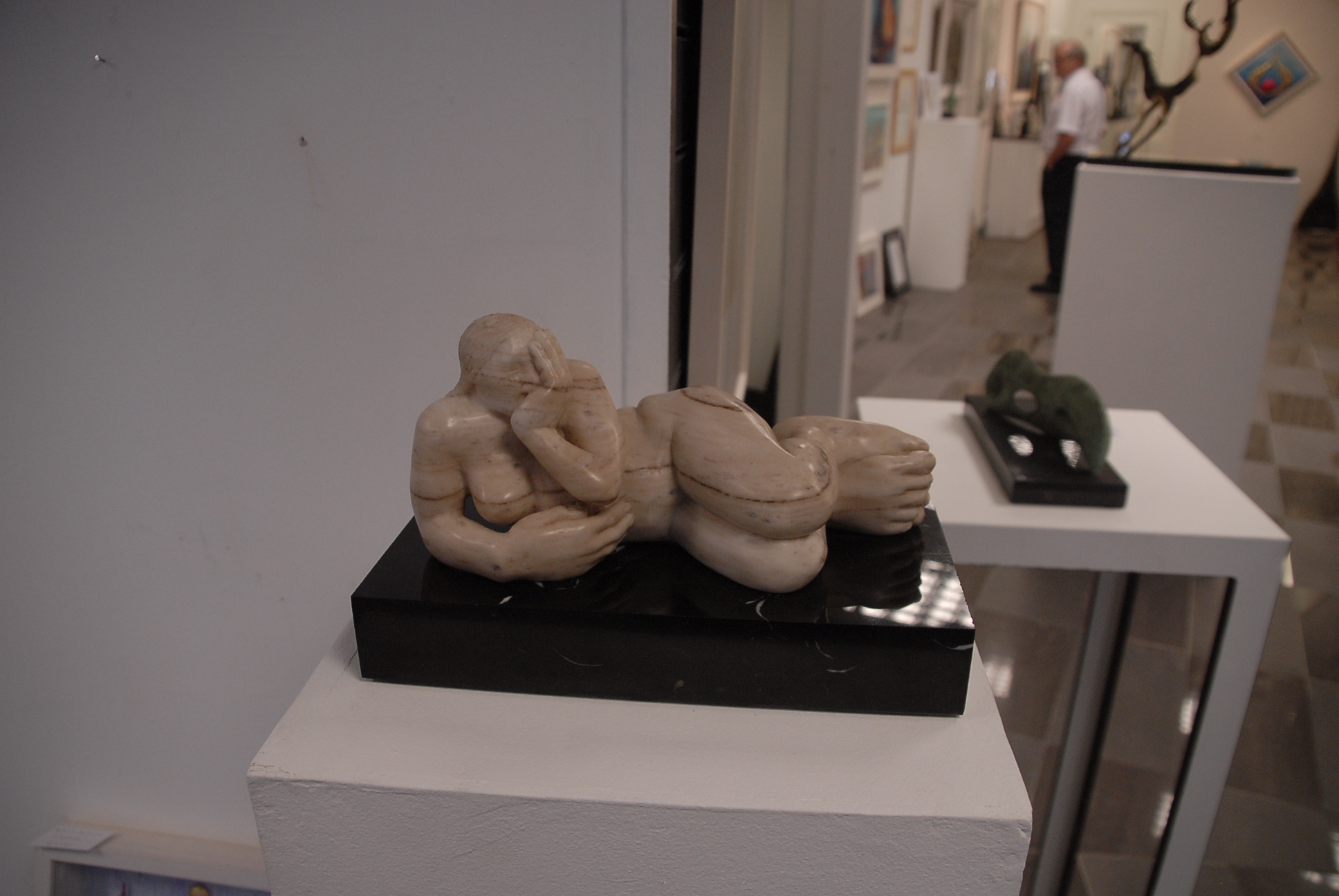 I think our life experience pushes and pulls us from one place to another; it doesn’t immediately influence my work. I think life’s influence is more subconscious. Ideas take time to filter through. Mostly my inspiration comes from a chance encounter or a glimpse of the unusual in the everyday. There are, however, two things that clearly stand out as a push in a certain direction. Firstly, an exhibition, in my 3rd year of art school. Michael Quane a well-known Irish sculptor had a solo exhibition in a gallery beside the art school. He works in stone. He also went to the same art school as I did 15 years previous. I was amazed by the sculpture. I visited the exhibition several times. More importantly, he was a living Irish figure sculptor, working in my local area. Becoming a professional artist went from dream to a real possibility. A more recent influence inspired a full exhibition in 2015. In fact, I am still making pieces inspired by two books I read in 2014. The first book was “Shake Hands With the Devil: The Failure of Humanity in Uganda,” by Lieutenant-General Roméo Dallaire. The second was “Whistleblower, Soldier, Spy: A Journey into the Dark Heart of the Global War on Terror,” by Tom Clonan. These books had a common theme: war. One book highlighted the specific horrors of war, the other that we as a species were constantly at war, conflict, rebellion, etc. This will be a recurring theme.
I think our life experience pushes and pulls us from one place to another; it doesn’t immediately influence my work. I think life’s influence is more subconscious. Ideas take time to filter through. Mostly my inspiration comes from a chance encounter or a glimpse of the unusual in the everyday. There are, however, two things that clearly stand out as a push in a certain direction. Firstly, an exhibition, in my 3rd year of art school. Michael Quane a well-known Irish sculptor had a solo exhibition in a gallery beside the art school. He works in stone. He also went to the same art school as I did 15 years previous. I was amazed by the sculpture. I visited the exhibition several times. More importantly, he was a living Irish figure sculptor, working in my local area. Becoming a professional artist went from dream to a real possibility. A more recent influence inspired a full exhibition in 2015. In fact, I am still making pieces inspired by two books I read in 2014. The first book was “Shake Hands With the Devil: The Failure of Humanity in Uganda,” by Lieutenant-General Roméo Dallaire. The second was “Whistleblower, Soldier, Spy: A Journey into the Dark Heart of the Global War on Terror,” by Tom Clonan. These books had a common theme: war. One book highlighted the specific horrors of war, the other that we as a species were constantly at war, conflict, rebellion, etc. This will be a recurring theme.
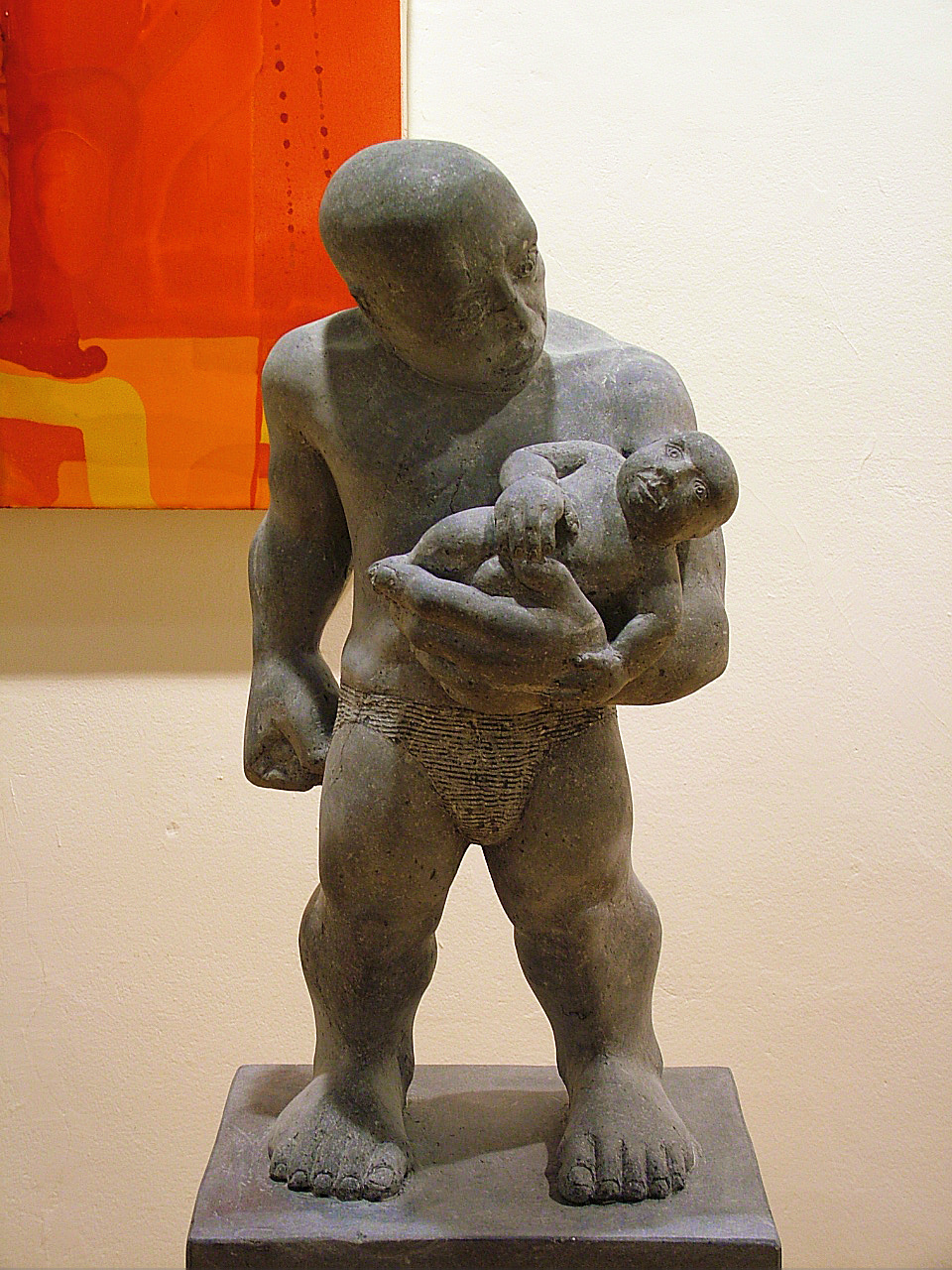 I make expressive, figurative, sculpture. I exaggerate the proportion of the figure, large hands and feet usually. This started almost by accident but grew into a style and useful compositional tool. Adding weight to an area or focusing the attention on a certain section. I use negative space, to ensure a sculpture inhabits rather than invades the space it’s in. To be able to see through the stone helps make the stone feel malleable. I have heard my sculptures described as sketches in marble. I want the work to have potential energy, not be too refined. As a result I think my work borders on an unfinished look sometimes. I don’t like to high polish everything and refine it to infinity. When I decide a piece is finished, it can feel arbitrary, but I tell myself it’s a subconscious experience. I see a block of stone as 100% potential, each time the chisel hits the stone I remove some of the potential, I go further down a path to a specific destination. Eventually I pass the point of no return, where the form is there, but very rough. After this point I am refining the shape. Too little work and the piece looks unfinished. Too much and it can look flat and even lifeless. I want to express myself with every sculpture. I am not sure I have an overall expressive goal, at least not a permanent one. The most consistent aim I have is honesty. To be making sculpture for me, because I love to do it. I think this is at the core of all art, the art I admire and aspire to, at least.
I make expressive, figurative, sculpture. I exaggerate the proportion of the figure, large hands and feet usually. This started almost by accident but grew into a style and useful compositional tool. Adding weight to an area or focusing the attention on a certain section. I use negative space, to ensure a sculpture inhabits rather than invades the space it’s in. To be able to see through the stone helps make the stone feel malleable. I have heard my sculptures described as sketches in marble. I want the work to have potential energy, not be too refined. As a result I think my work borders on an unfinished look sometimes. I don’t like to high polish everything and refine it to infinity. When I decide a piece is finished, it can feel arbitrary, but I tell myself it’s a subconscious experience. I see a block of stone as 100% potential, each time the chisel hits the stone I remove some of the potential, I go further down a path to a specific destination. Eventually I pass the point of no return, where the form is there, but very rough. After this point I am refining the shape. Too little work and the piece looks unfinished. Too much and it can look flat and even lifeless. I want to express myself with every sculpture. I am not sure I have an overall expressive goal, at least not a permanent one. The most consistent aim I have is honesty. To be making sculpture for me, because I love to do it. I think this is at the core of all art, the art I admire and aspire to, at least. 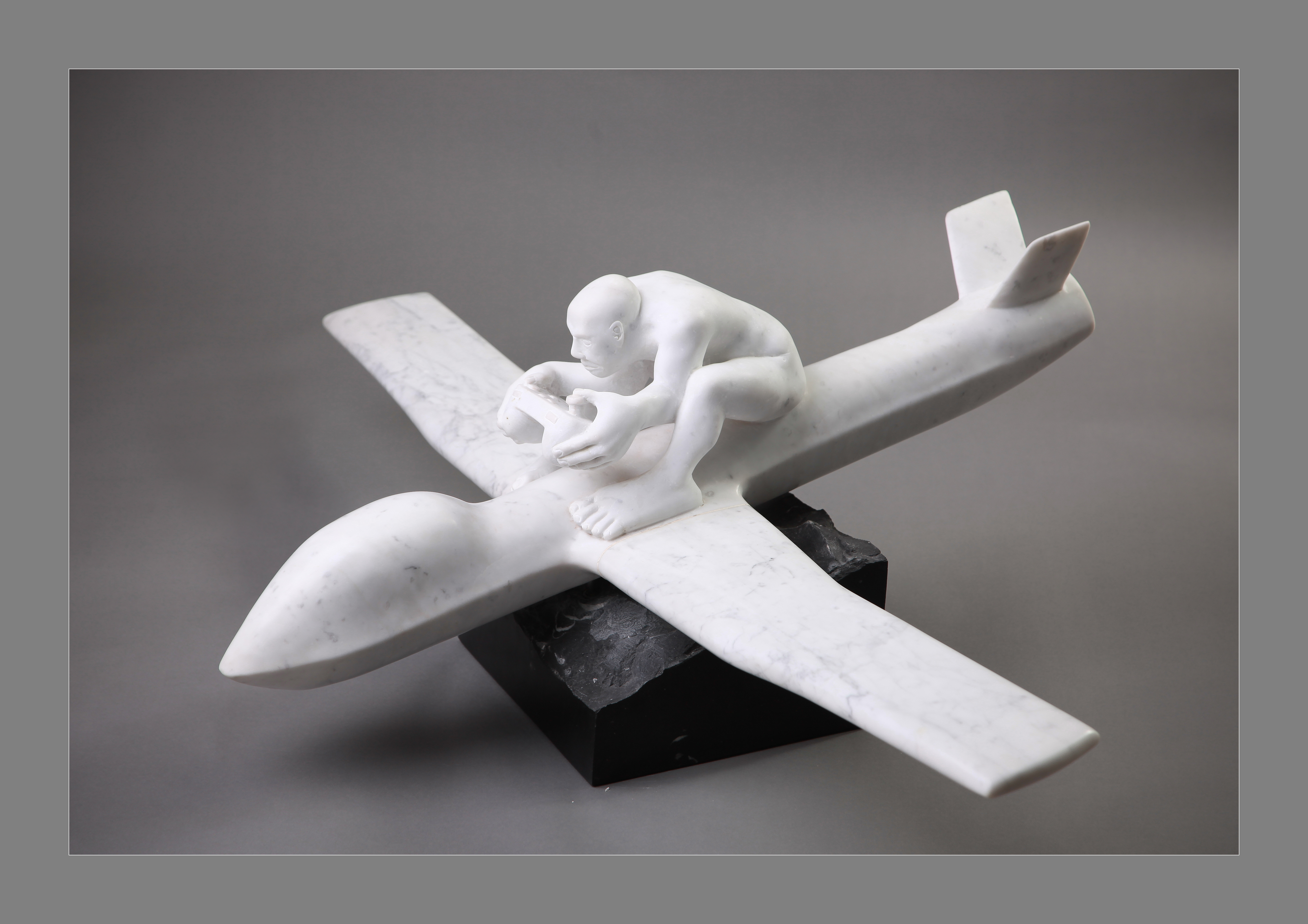
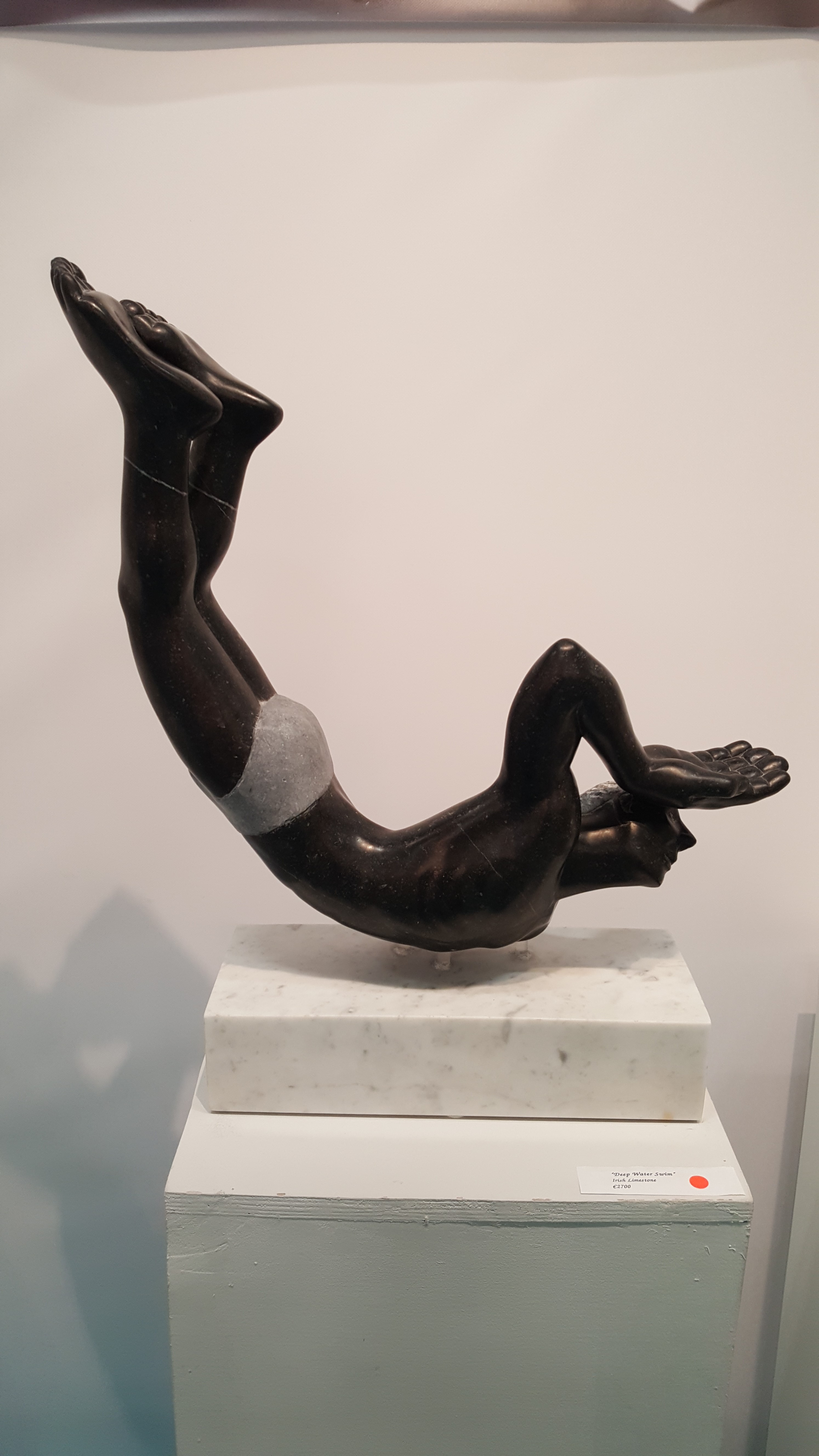
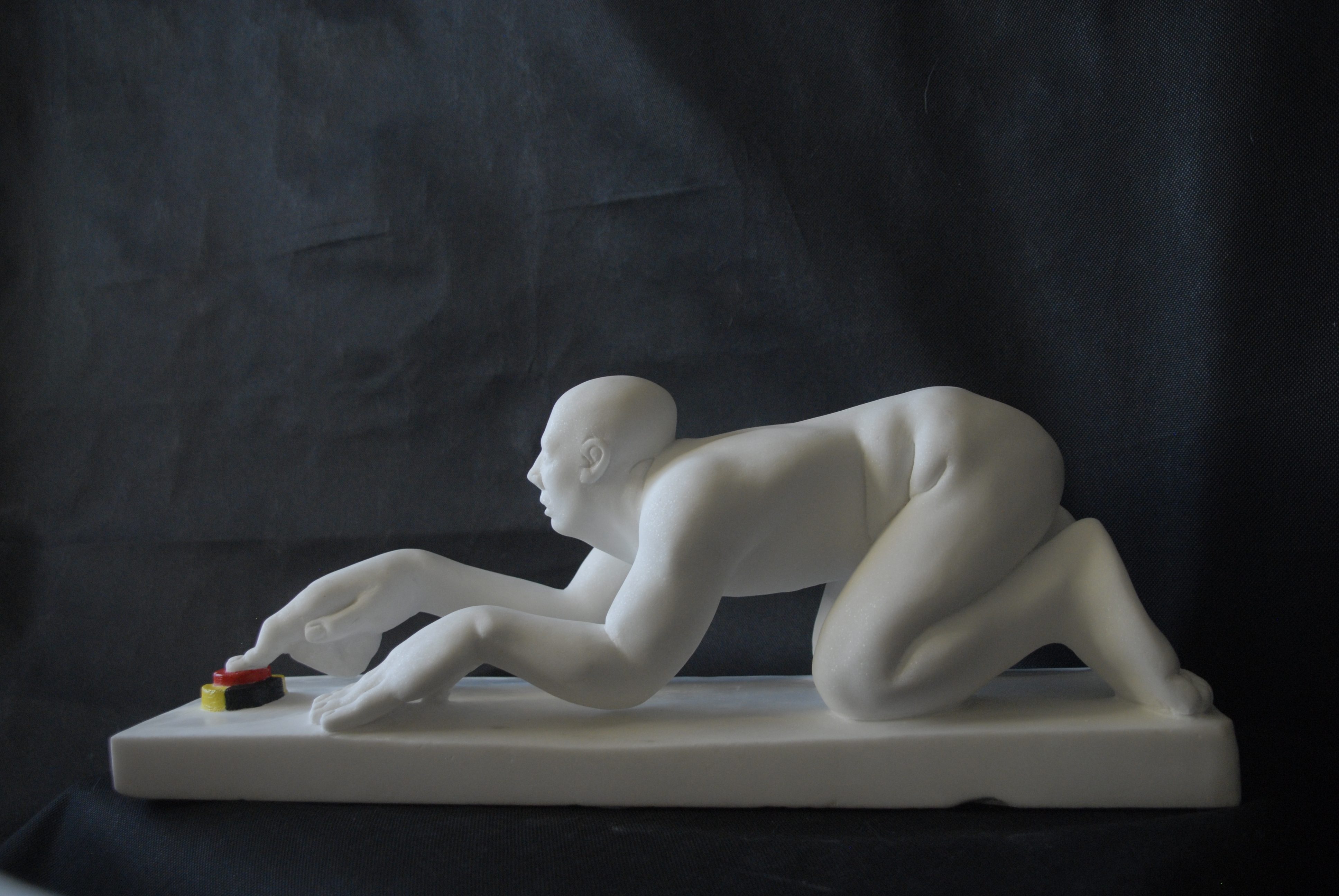
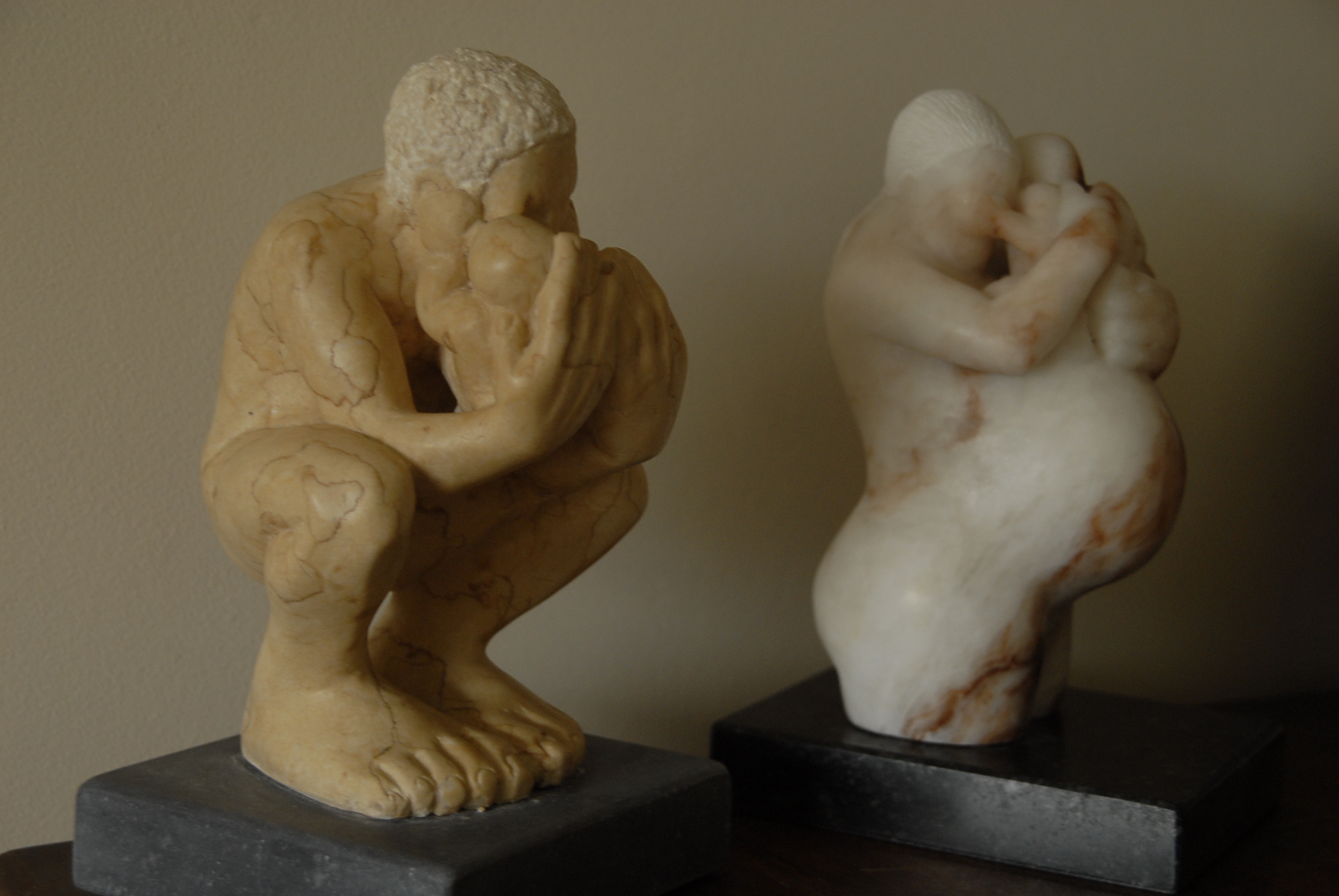
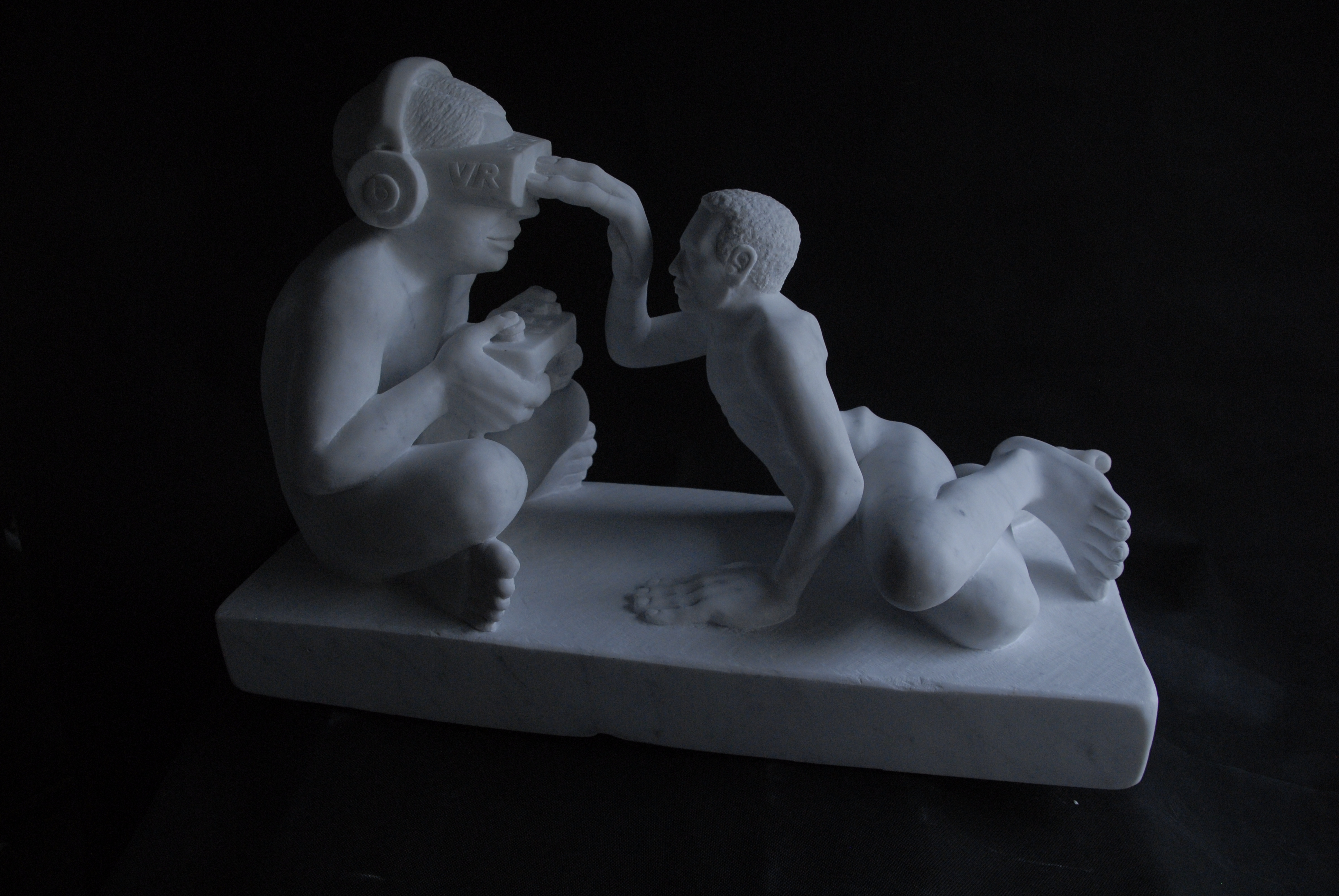 I made a sculpture called “The Mighty Oak” from Kilkenny marble (a darker variant of Irish limestone). This piece was a female figure holding a jade acorn. I left the stone honed in this case, suitable for outdoors. I also used a round base which helped with the circular flow of movement. Both “Icarus” and “The Mighty Oak” are based around compositional challenges and simple beauty. In contrast, an ongoing theme of warfare (anti-war,) has preoccupied me since 2014. “Game Over, Generation Alpha” is an Italian marble sculpture of a male figure sitting on a predator drone flying it via games console. This was one of six pieces in an exhibition called “Behold Man: Apes with Guns.” Each piece dealt with a different aspect of modern warfare. Spending seven or eight months thinking about war and its effect on society was a real drain. Although I designed a couple more pieces after the exhibition in late 2015 it is only now I am starting to make them.
I made a sculpture called “The Mighty Oak” from Kilkenny marble (a darker variant of Irish limestone). This piece was a female figure holding a jade acorn. I left the stone honed in this case, suitable for outdoors. I also used a round base which helped with the circular flow of movement. Both “Icarus” and “The Mighty Oak” are based around compositional challenges and simple beauty. In contrast, an ongoing theme of warfare (anti-war,) has preoccupied me since 2014. “Game Over, Generation Alpha” is an Italian marble sculpture of a male figure sitting on a predator drone flying it via games console. This was one of six pieces in an exhibition called “Behold Man: Apes with Guns.” Each piece dealt with a different aspect of modern warfare. Spending seven or eight months thinking about war and its effect on society was a real drain. Although I designed a couple more pieces after the exhibition in late 2015 it is only now I am starting to make them.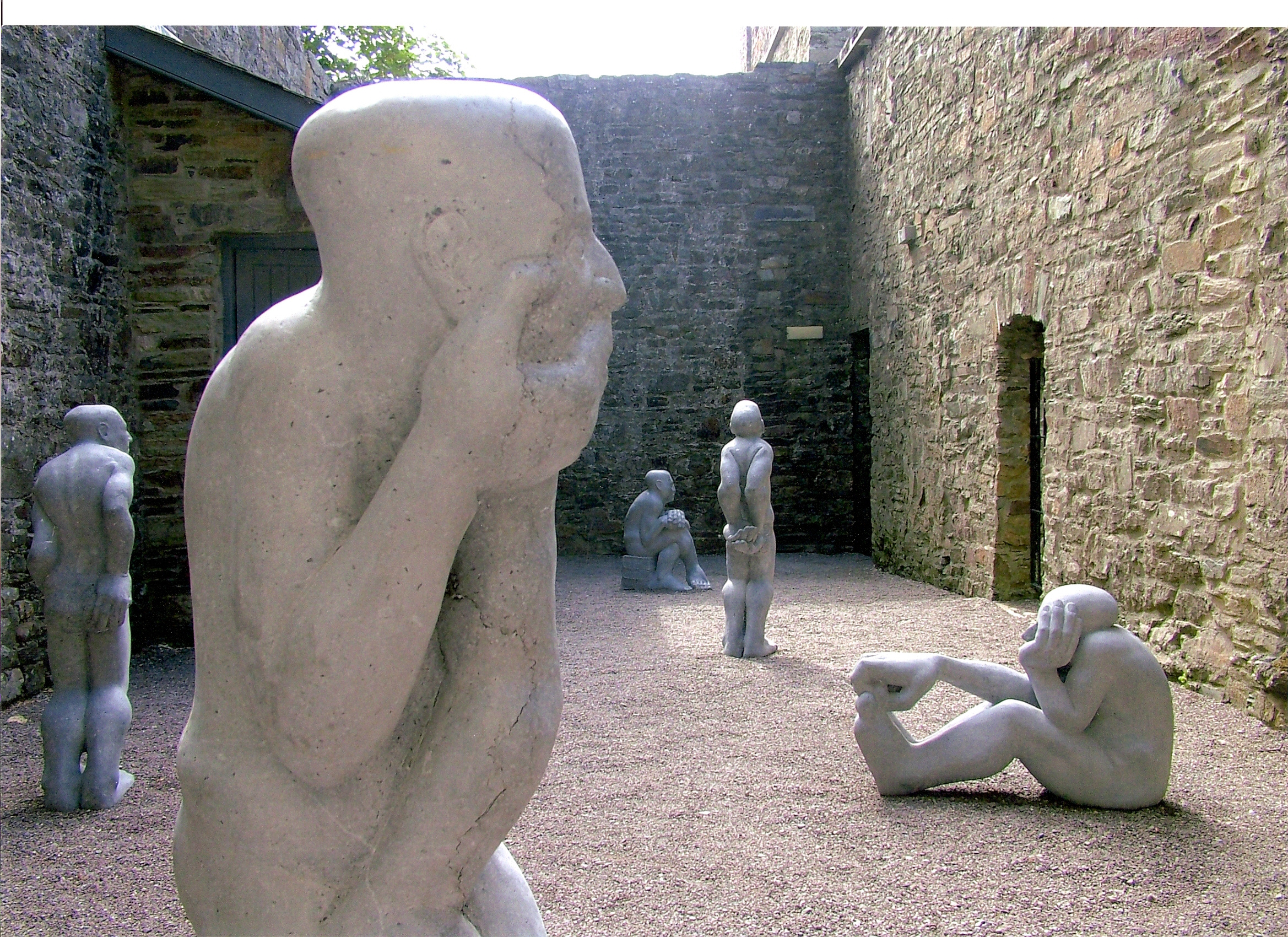 I organize sculpture exhibitions to promote 3-D art in Ireland, in doing so I have exhibited with many people who inspired and encouraged me early in my career. I have also managed to swap art works with some exceptional artists too! The social aspect of these exhibitions is important to me. I joined NWSSA at the first Camp Pilgrim Firs. Surrounded by stone, and enthusiastic carvers, I had the time of my life and met some great carvers and new friends; also new carvers and great friends. The experience helped me remember that stone is fun. That the joy of stone carving is why I use stone over any other medium. To continuously learn as I work is part of what drives me. Joining NWSSA at Pilgrim Firs reminded me there are many techniques to be learned from the honed masters or the beginner with vigorous energy and fresh eyes. I felt the welcome of the group. I felt at home, united by a passion for stone sculpting. I look forward to seeing my NWSSA friends again soon!
I organize sculpture exhibitions to promote 3-D art in Ireland, in doing so I have exhibited with many people who inspired and encouraged me early in my career. I have also managed to swap art works with some exceptional artists too! The social aspect of these exhibitions is important to me. I joined NWSSA at the first Camp Pilgrim Firs. Surrounded by stone, and enthusiastic carvers, I had the time of my life and met some great carvers and new friends; also new carvers and great friends. The experience helped me remember that stone is fun. That the joy of stone carving is why I use stone over any other medium. To continuously learn as I work is part of what drives me. Joining NWSSA at Pilgrim Firs reminded me there are many techniques to be learned from the honed masters or the beginner with vigorous energy and fresh eyes. I felt the welcome of the group. I felt at home, united by a passion for stone sculpting. I look forward to seeing my NWSSA friends again soon!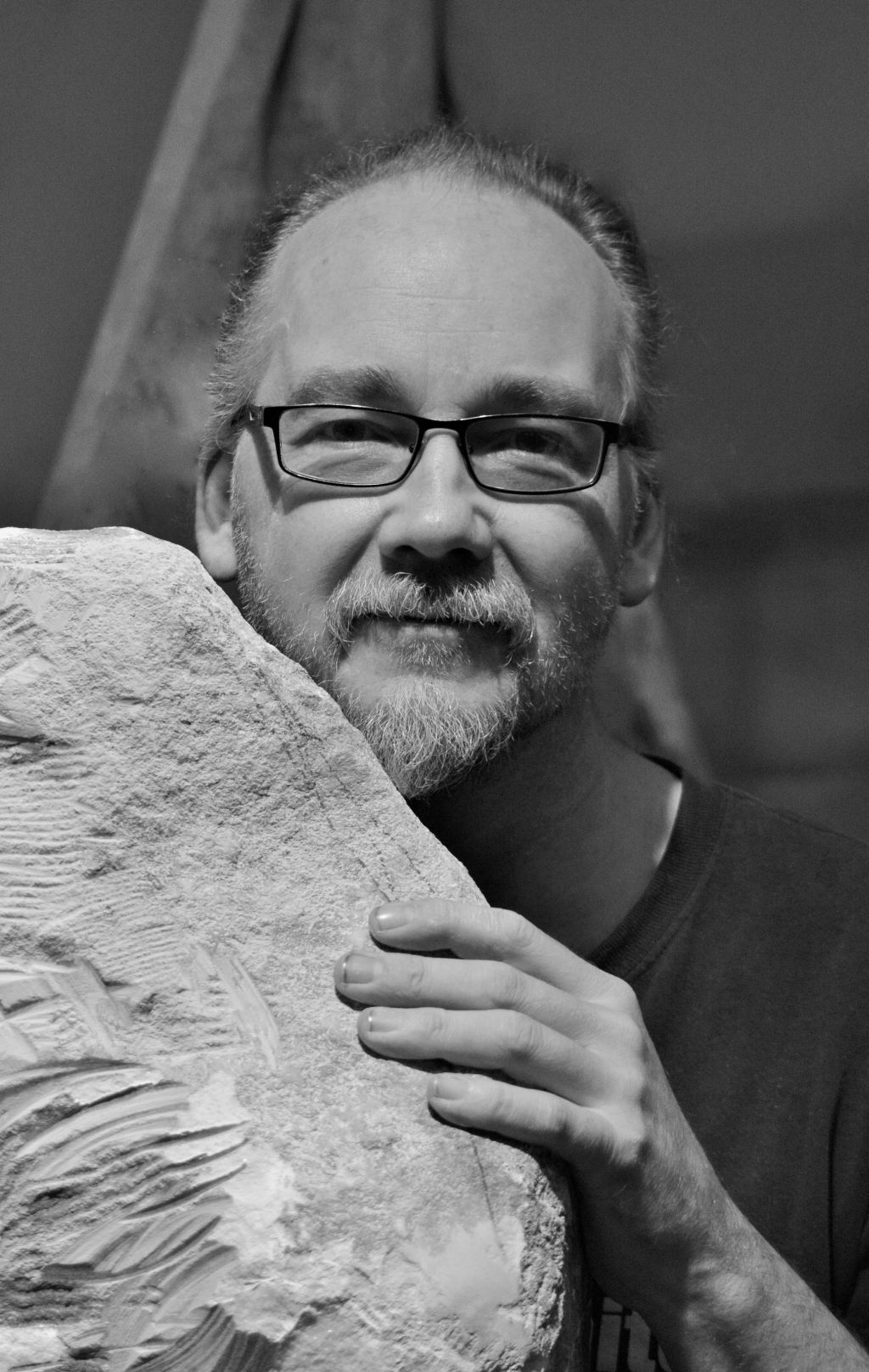
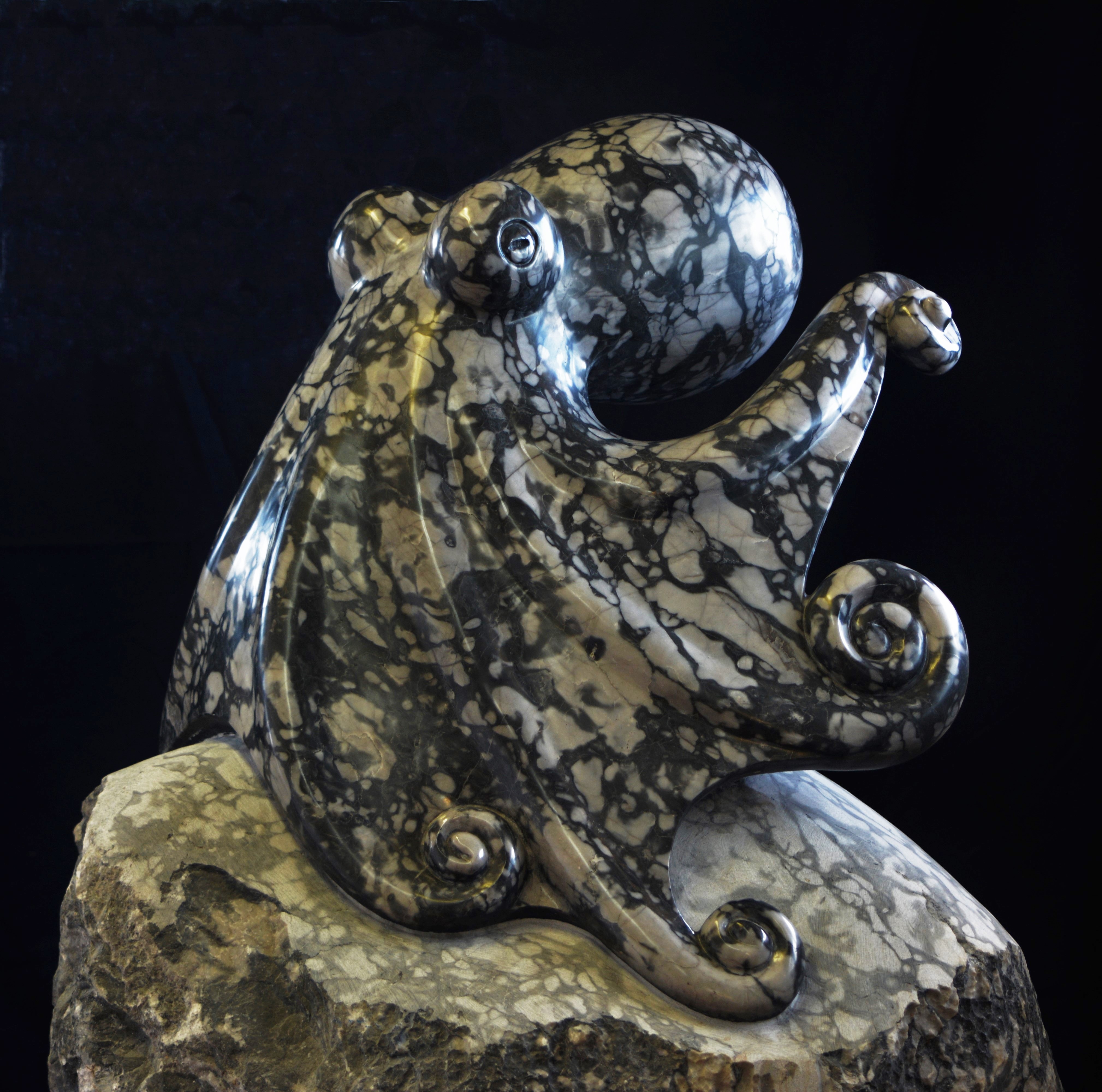 At the same time, my brother and his wife were living at my parents’ home before moving to a place up north. During this time, I started to sit out in the garage and carve soapstone with Sandy. We would just talk about everything and sculptures would be carved. After I had made about twelve sculptures, he asked if I wanted to go to the Ottawa Christmas show with him; that was 1985. At the show, I sold six and made about $1,000. Good for an unemployed film graduate in the 1980s.
At the same time, my brother and his wife were living at my parents’ home before moving to a place up north. During this time, I started to sit out in the garage and carve soapstone with Sandy. We would just talk about everything and sculptures would be carved. After I had made about twelve sculptures, he asked if I wanted to go to the Ottawa Christmas show with him; that was 1985. At the show, I sold six and made about $1,000. Good for an unemployed film graduate in the 1980s. 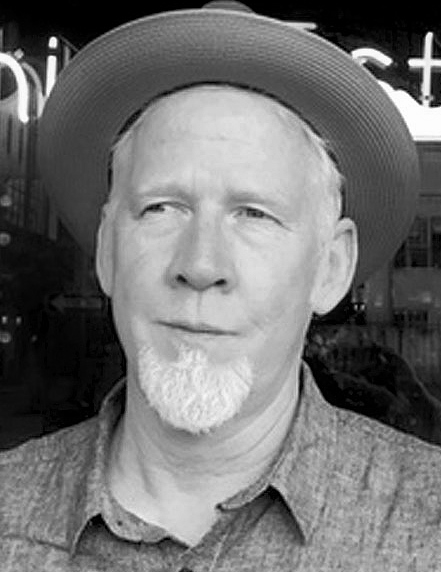
 As cathedrals go, this mammoth edifice is a 19th century show of American might. It’s a cathedral to beat all cathedrals… in size, anyway. The interior floor is two football fields in length. The ceiling height is 120 ft. at its highest and with massive granite walls sheathed in a thick skin of limestone. The place is dirty, dank and cold just like the city it sits in, and I loved it instantly. I had never seen such grand architecture. There was nothing timid in the construction of this building. I was immediately struck by how the roaring city outside is silenced upon entry.
As cathedrals go, this mammoth edifice is a 19th century show of American might. It’s a cathedral to beat all cathedrals… in size, anyway. The interior floor is two football fields in length. The ceiling height is 120 ft. at its highest and with massive granite walls sheathed in a thick skin of limestone. The place is dirty, dank and cold just like the city it sits in, and I loved it instantly. I had never seen such grand architecture. There was nothing timid in the construction of this building. I was immediately struck by how the roaring city outside is silenced upon entry.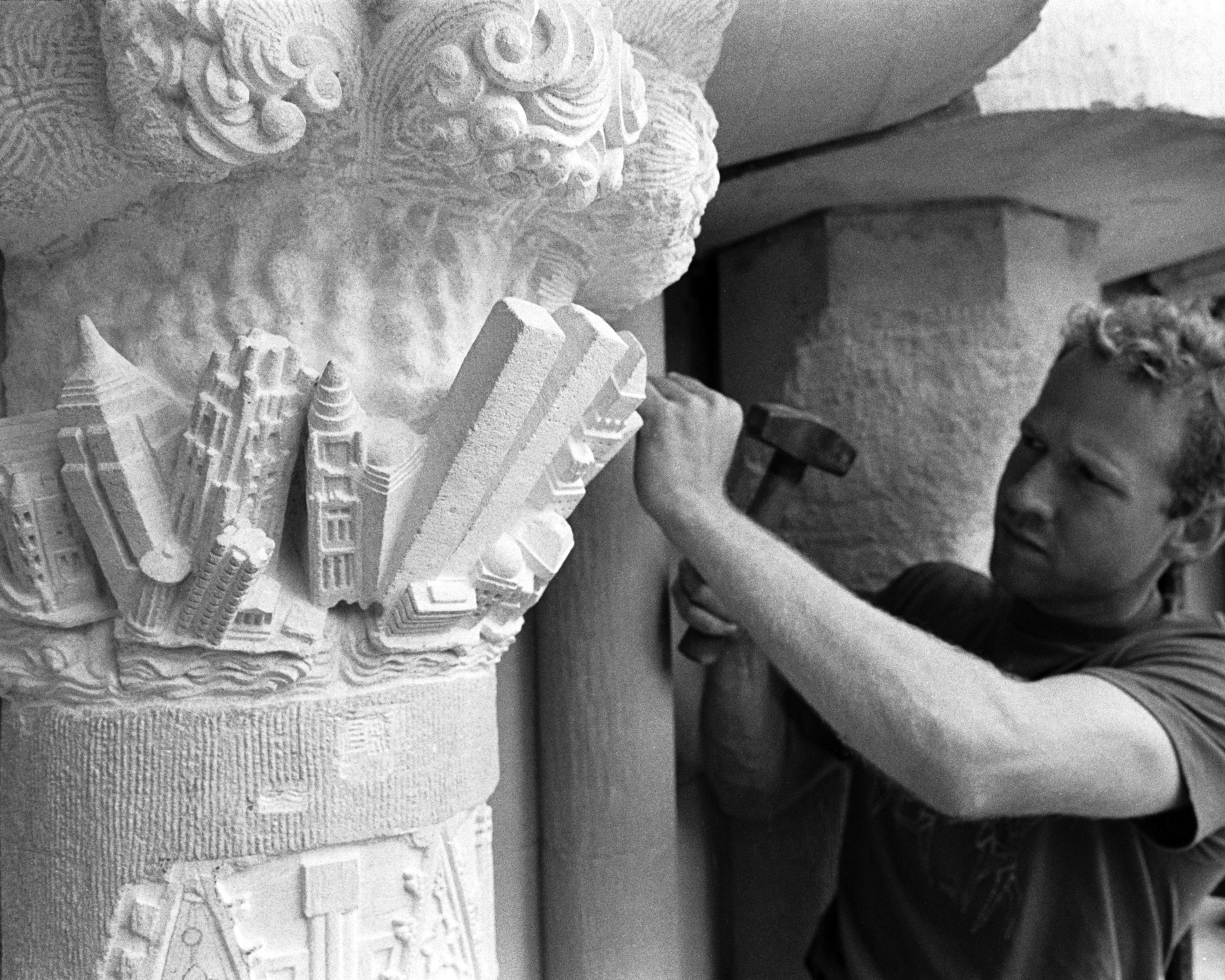
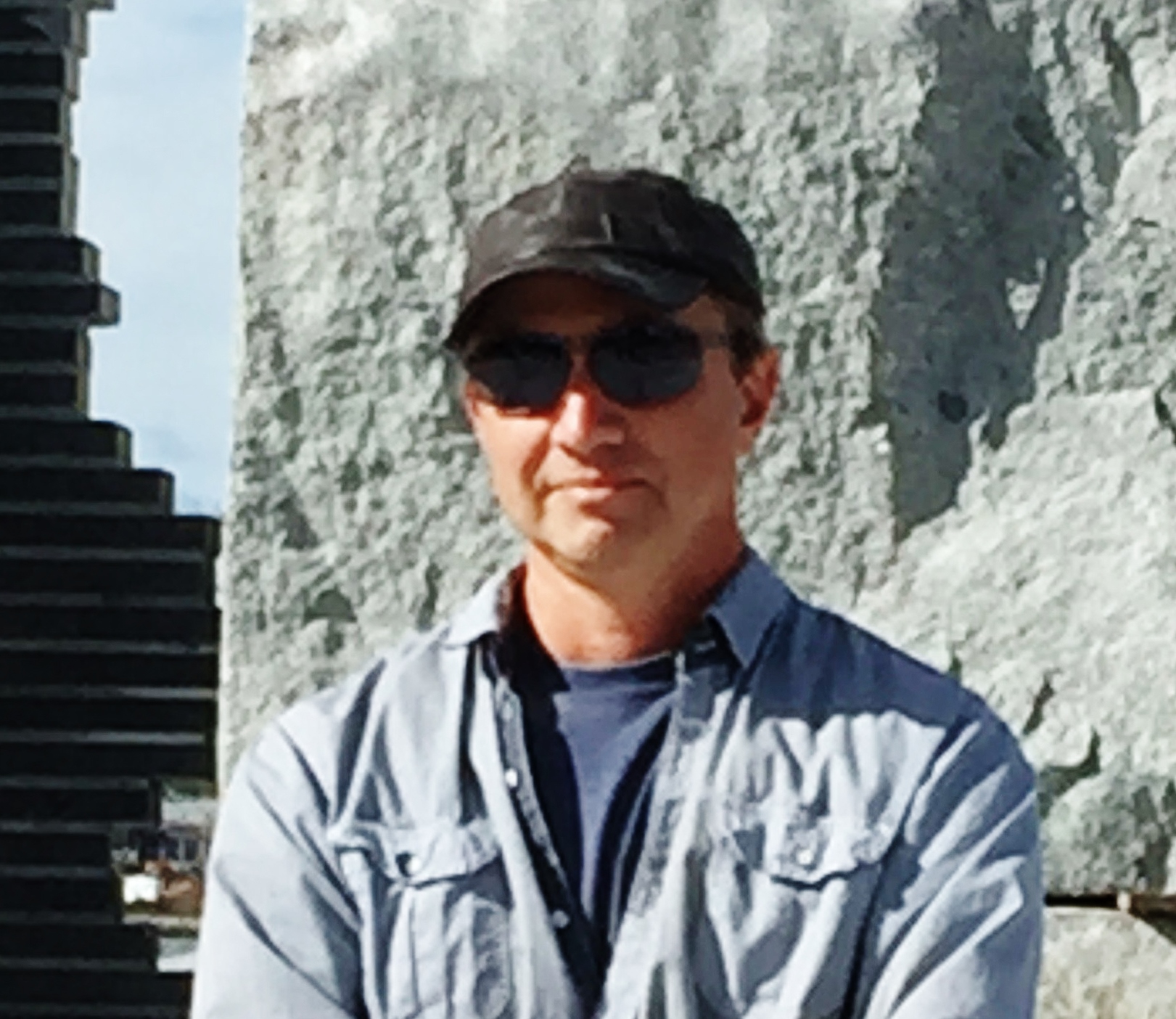
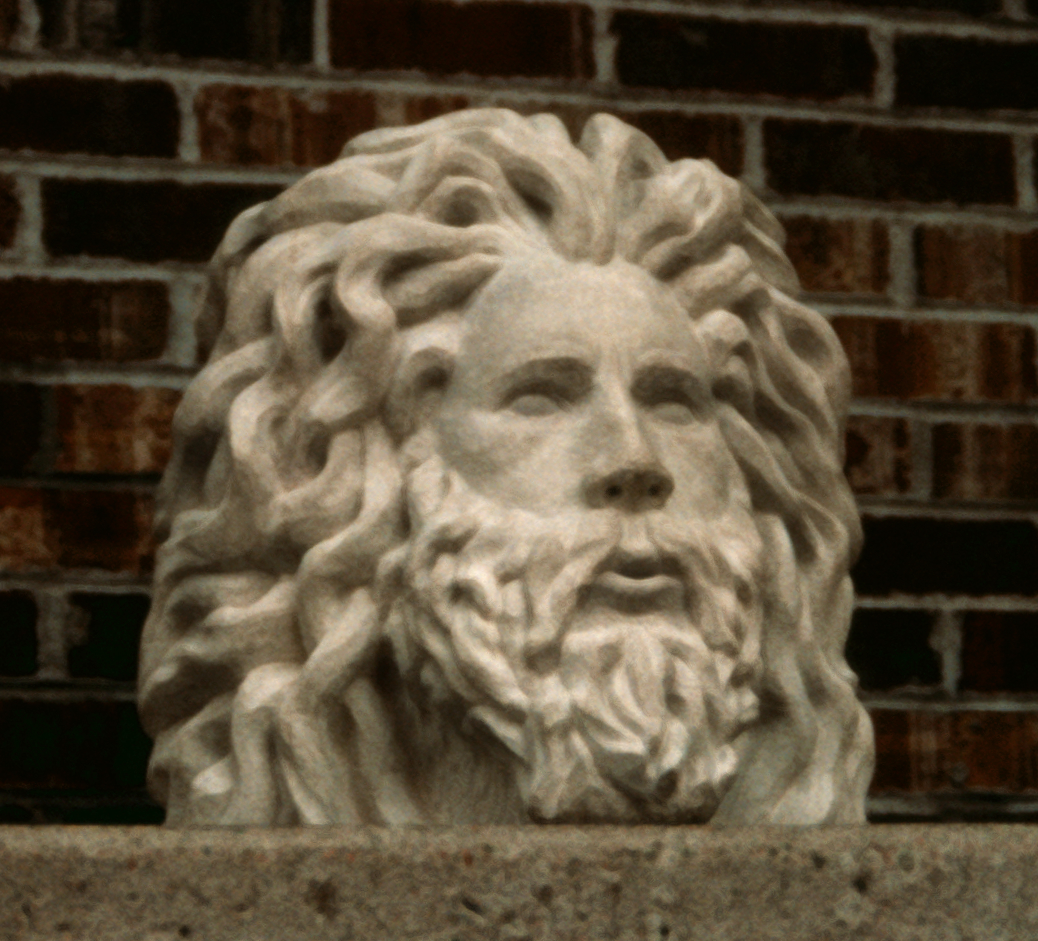
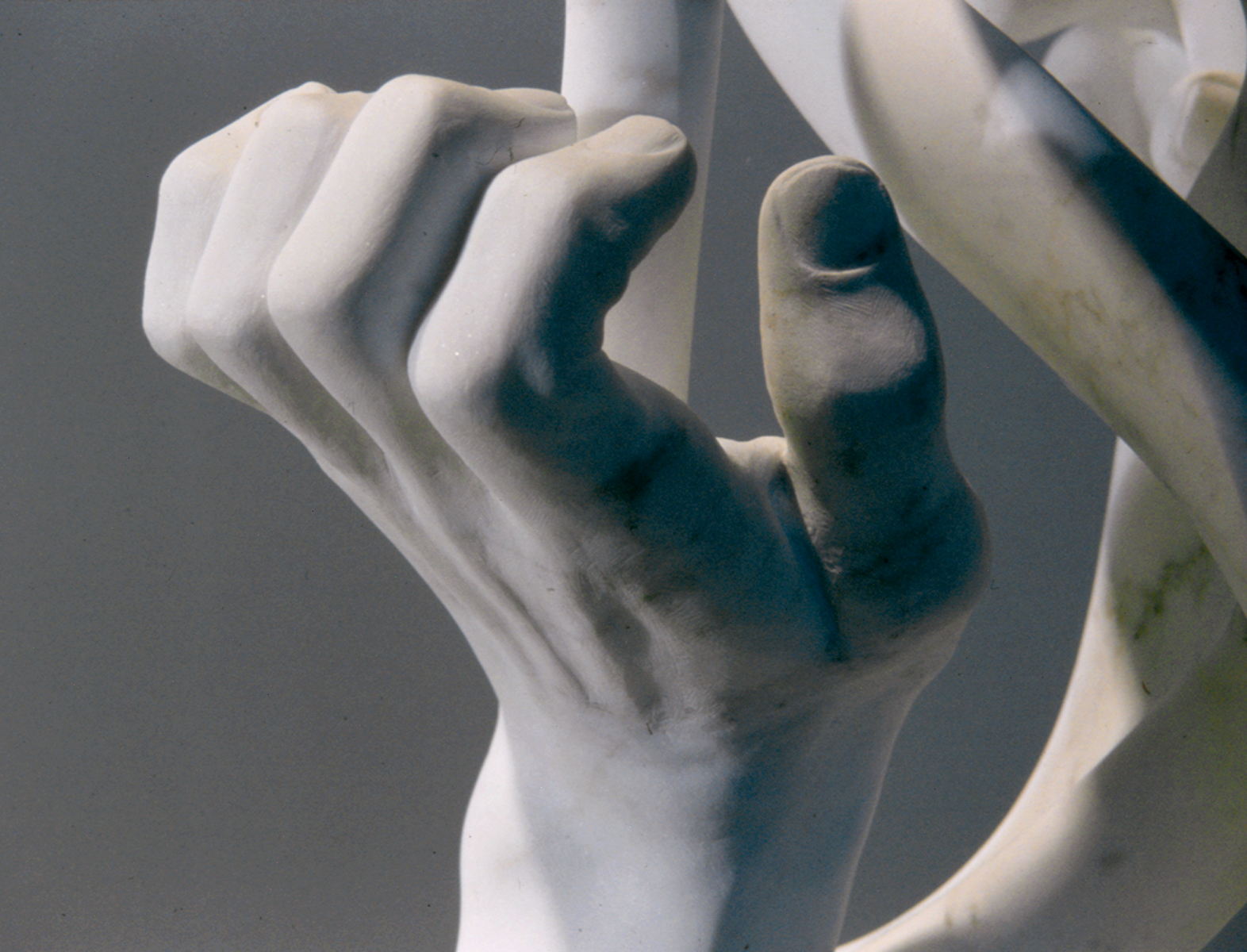
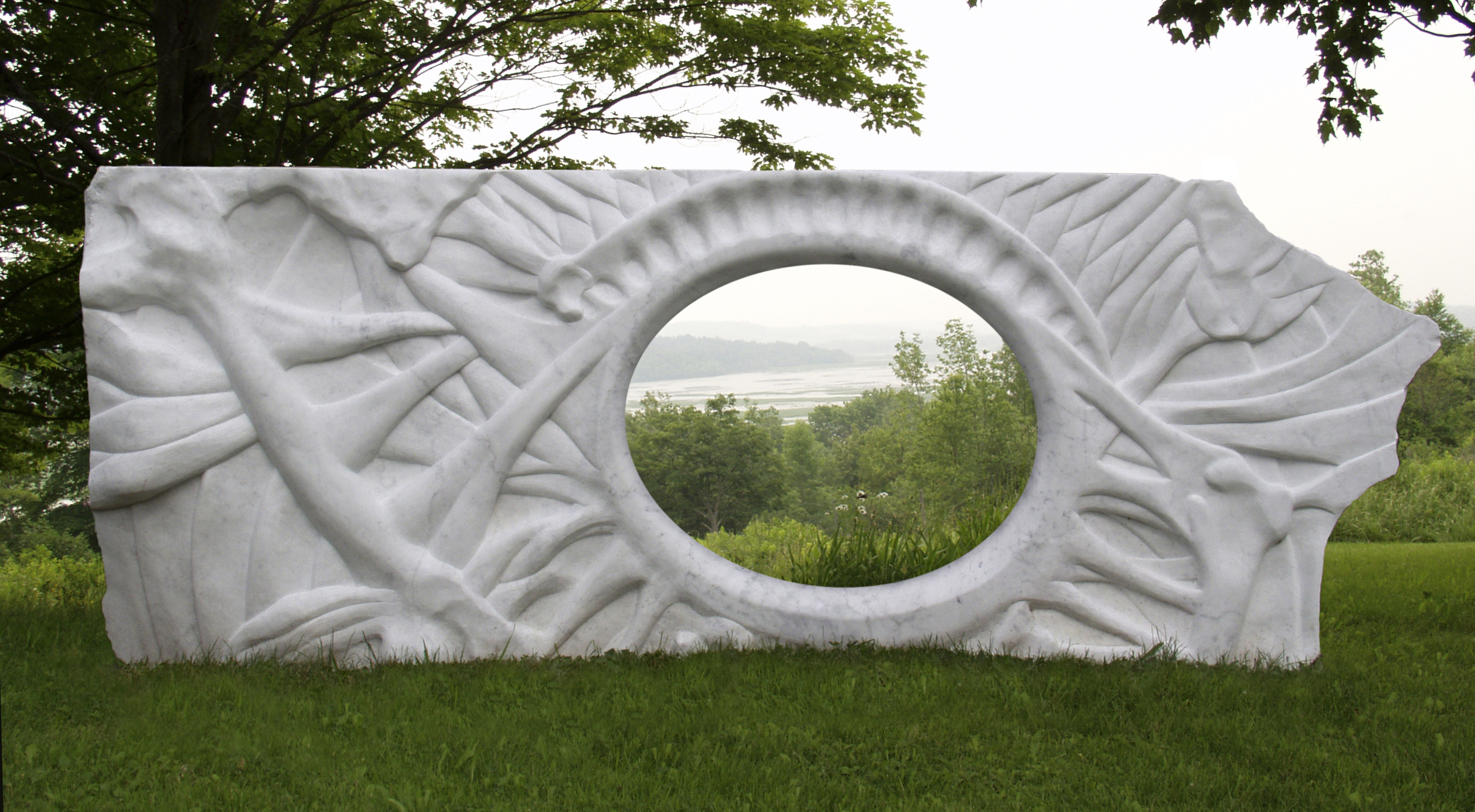 “Inner View” Marble. 2001 104”x42”x10’
“Inner View” Marble. 2001 104”x42”x10’

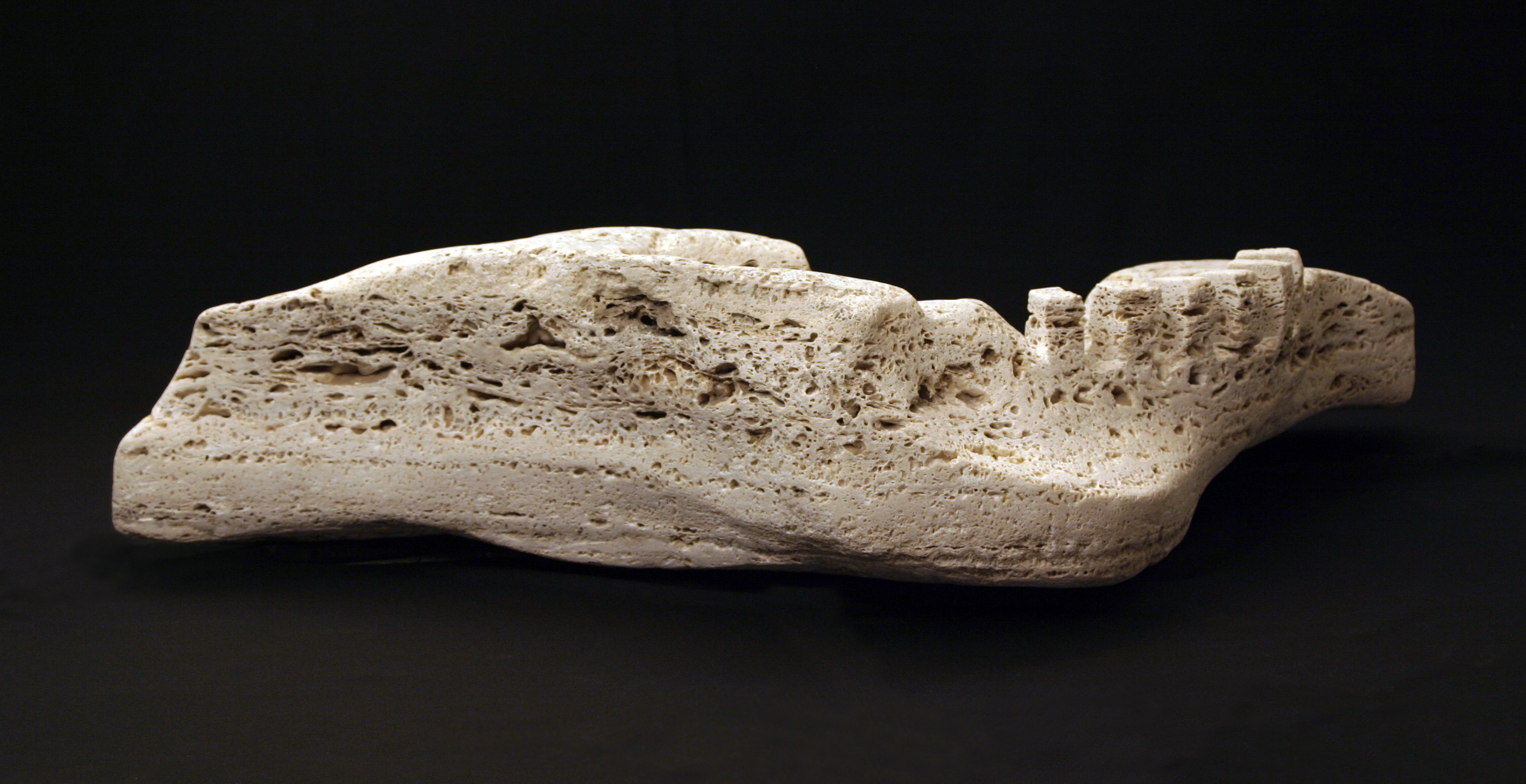
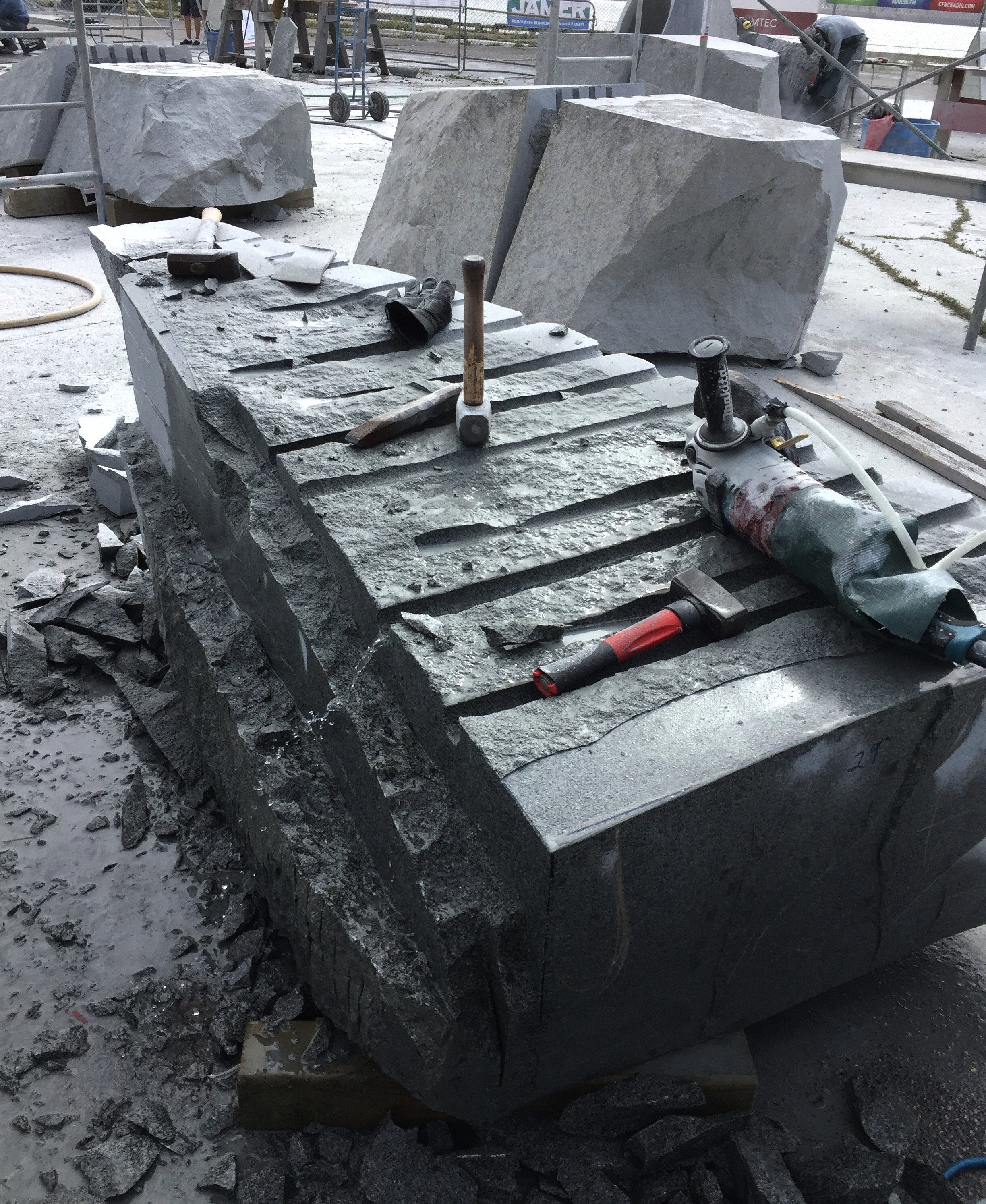 It was a great experience to attend the Saint John International Sculpture Symposium this past summer for six weeks. Working alongside seven other sculptors to cut through tons of granite, each creating our own vision for a public art piece.
It was a great experience to attend the Saint John International Sculpture Symposium this past summer for six weeks. Working alongside seven other sculptors to cut through tons of granite, each creating our own vision for a public art piece.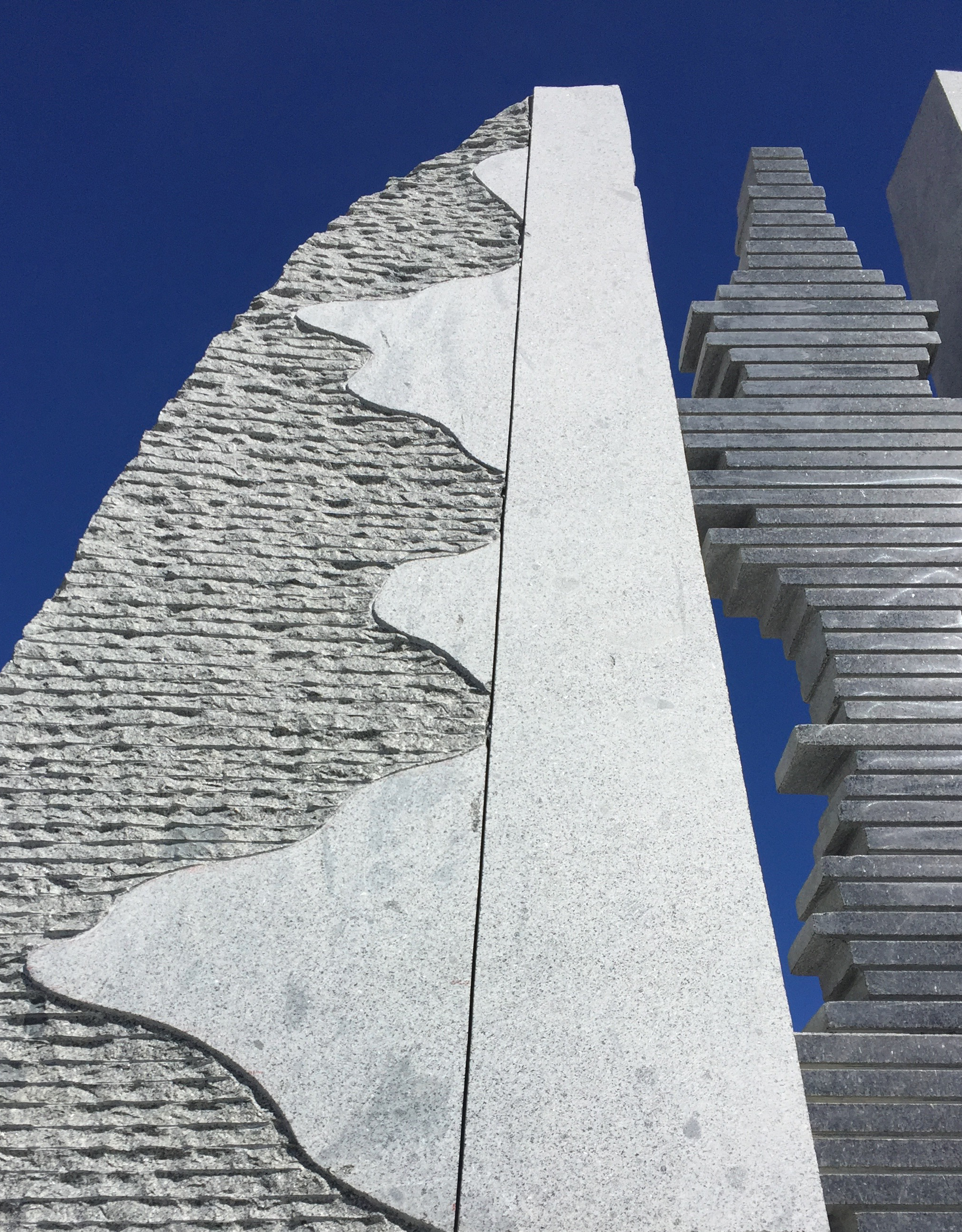
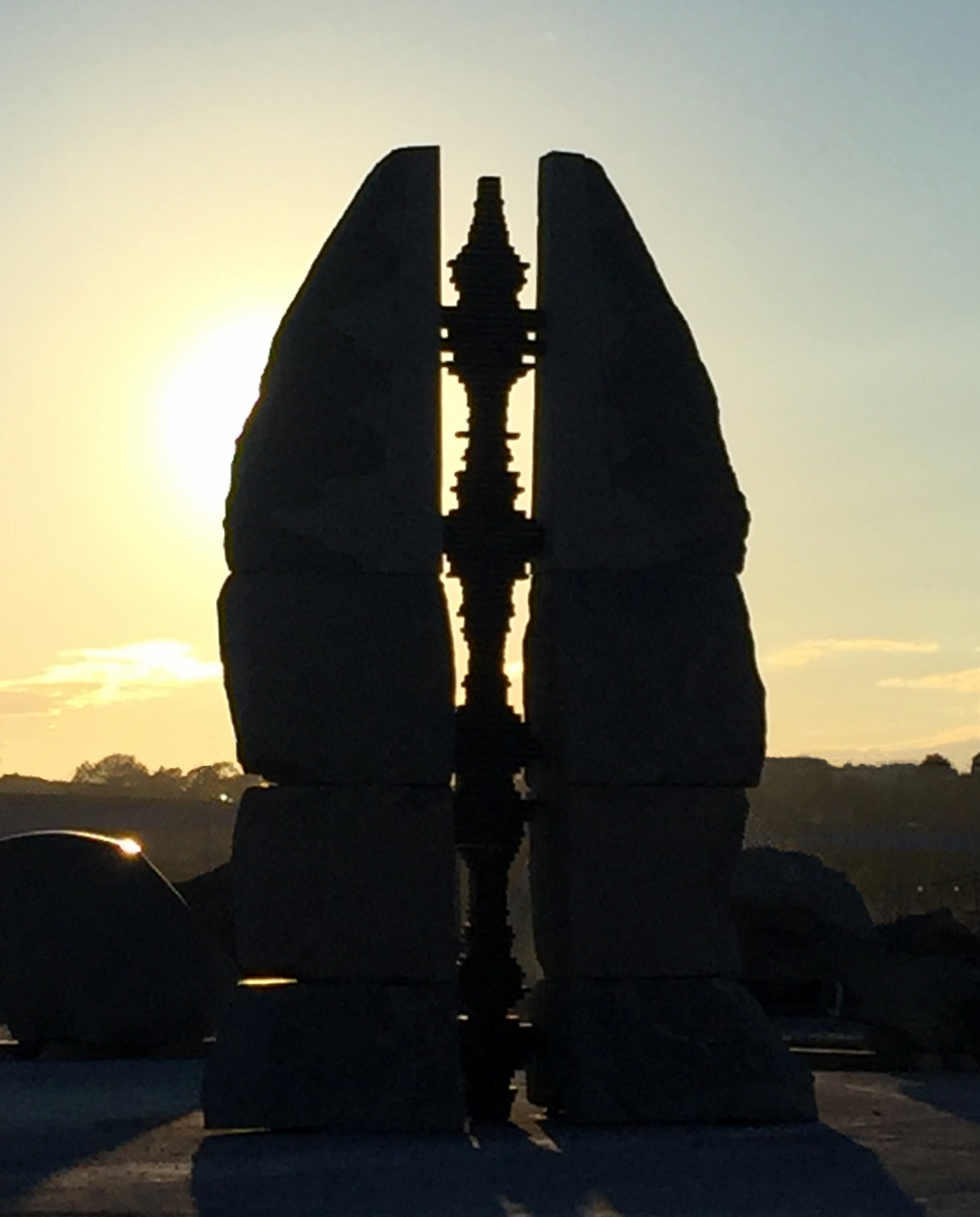 “Song of the Deep” 2018. 13’tall x 8.5’ x 4’
“Song of the Deep” 2018. 13’tall x 8.5’ x 4’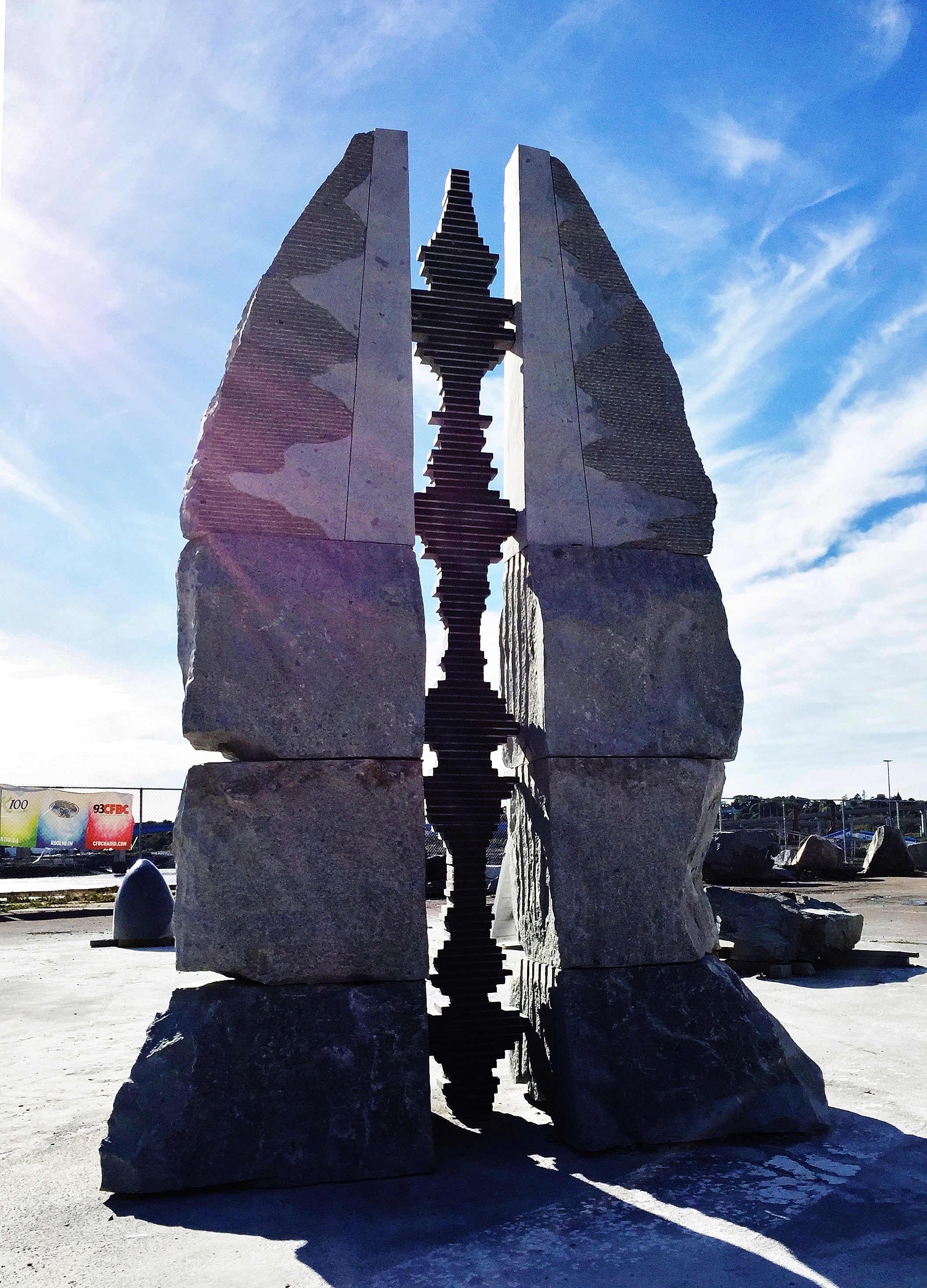
 These 73-year-old hands have been carving jade for nearly forty of those years. Nary a penny earned for the effort. Several reasons for that. Mainly the ample financial rewards earned by these hands working on telecommunication electronics and main frame computers dissuaded any thoughts of pursuing a life of starving artist. The attached ten digits remain busy in these twelve years of retirement but as yet still monetarily uncompensated. Though a price was incurred in those forty years. Fortunately that matter was resolved satisfactorily the past year by carpal tunnel release surgery on both wrists.
These 73-year-old hands have been carving jade for nearly forty of those years. Nary a penny earned for the effort. Several reasons for that. Mainly the ample financial rewards earned by these hands working on telecommunication electronics and main frame computers dissuaded any thoughts of pursuing a life of starving artist. The attached ten digits remain busy in these twelve years of retirement but as yet still monetarily uncompensated. Though a price was incurred in those forty years. Fortunately that matter was resolved satisfactorily the past year by carpal tunnel release surgery on both wrists.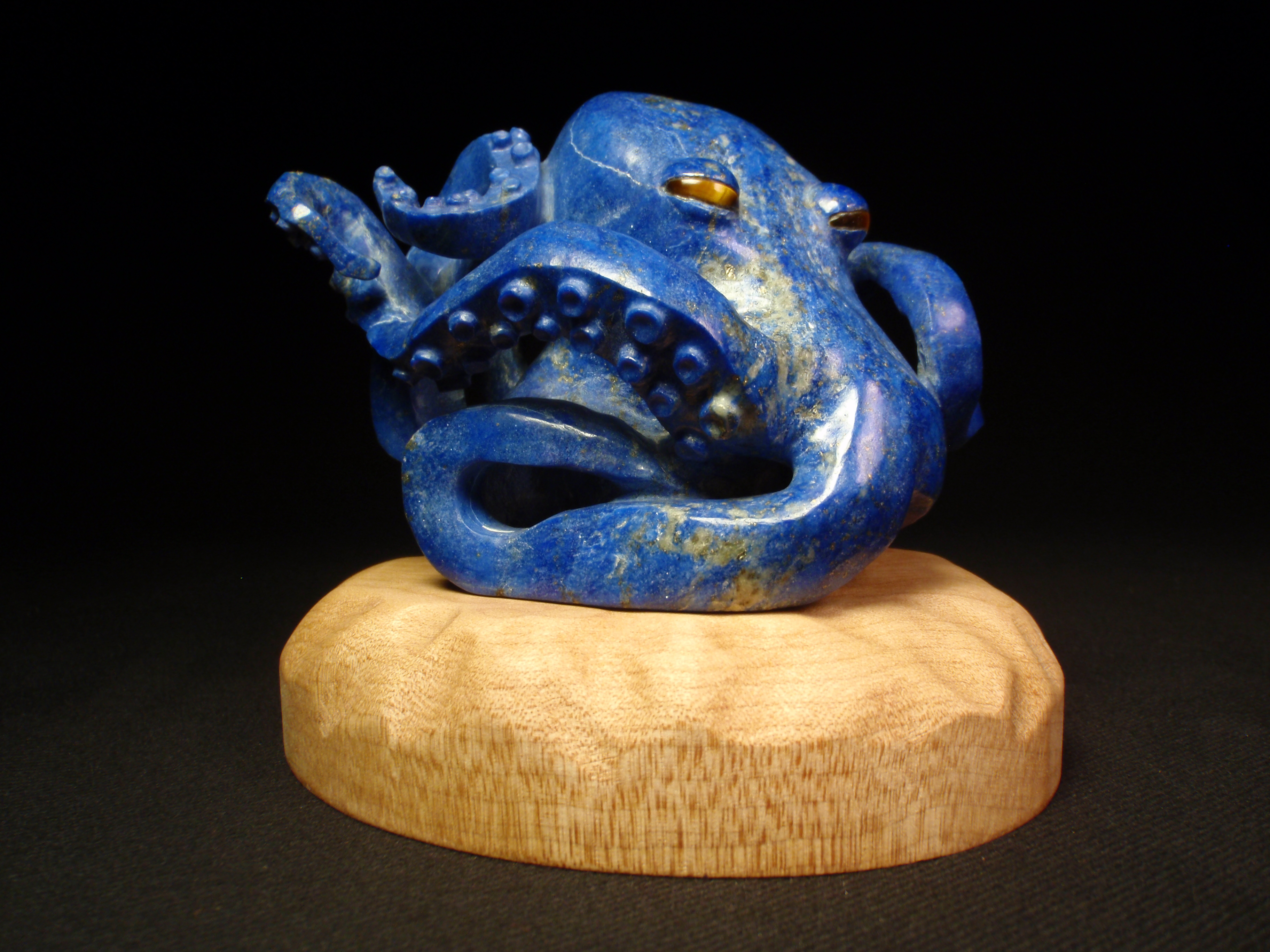 In the early years there was experimentation with any number of gemstone materials. Mostly of the cryptocrystalline quartz varieties. But one day these eyes set upon this unfamiliar green block of stone called jade. Things have never been the same since. Partly owing to acquired skills but appreciably owing to a stone obligingly compliant to often unreasonable expectations this chap in a younger shop apron was catapulted from beginner carver to awarded master in record time. So began a decades long love affair with jade.
In the early years there was experimentation with any number of gemstone materials. Mostly of the cryptocrystalline quartz varieties. But one day these eyes set upon this unfamiliar green block of stone called jade. Things have never been the same since. Partly owing to acquired skills but appreciably owing to a stone obligingly compliant to often unreasonable expectations this chap in a younger shop apron was catapulted from beginner carver to awarded master in record time. So began a decades long love affair with jade.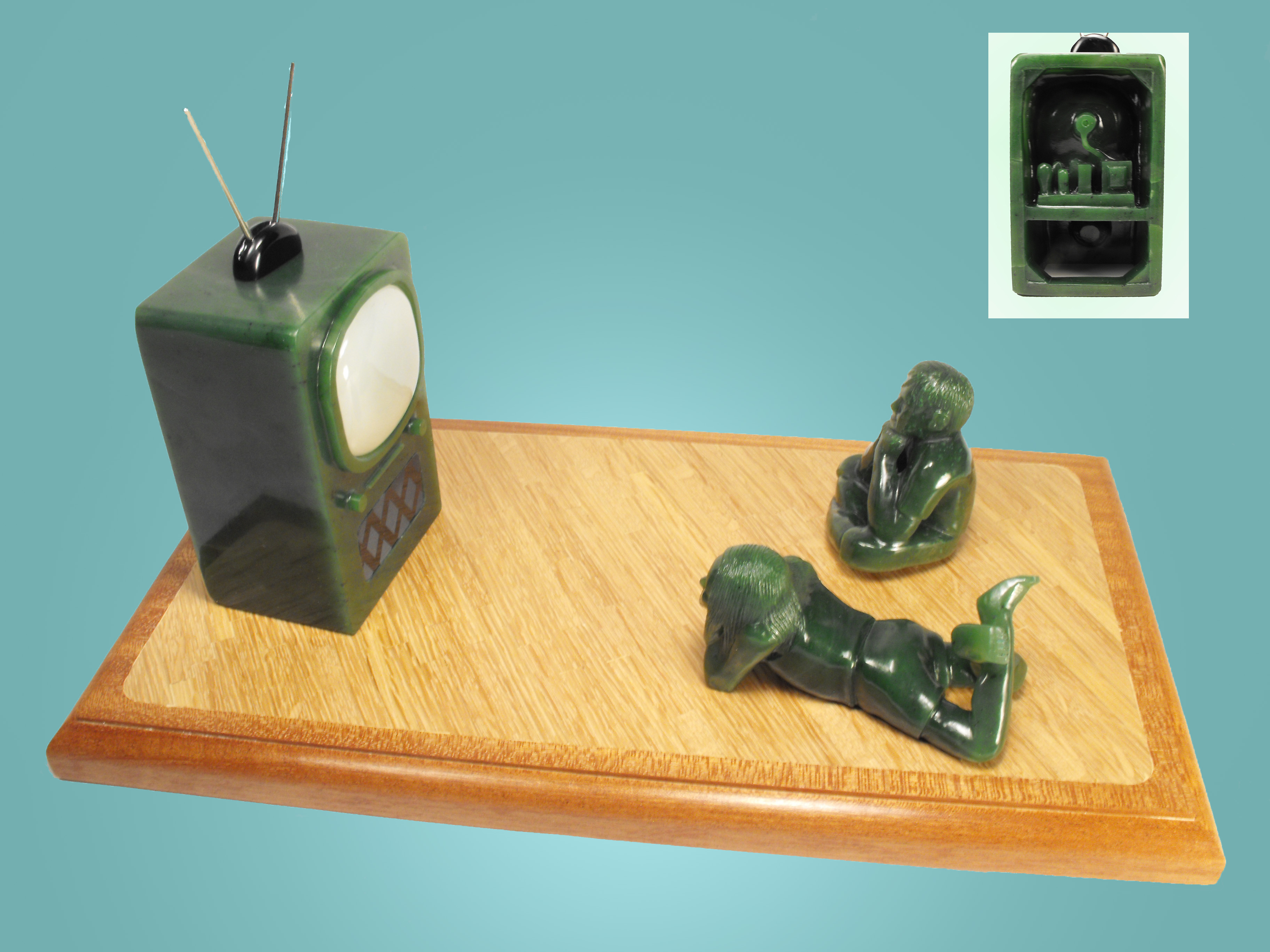
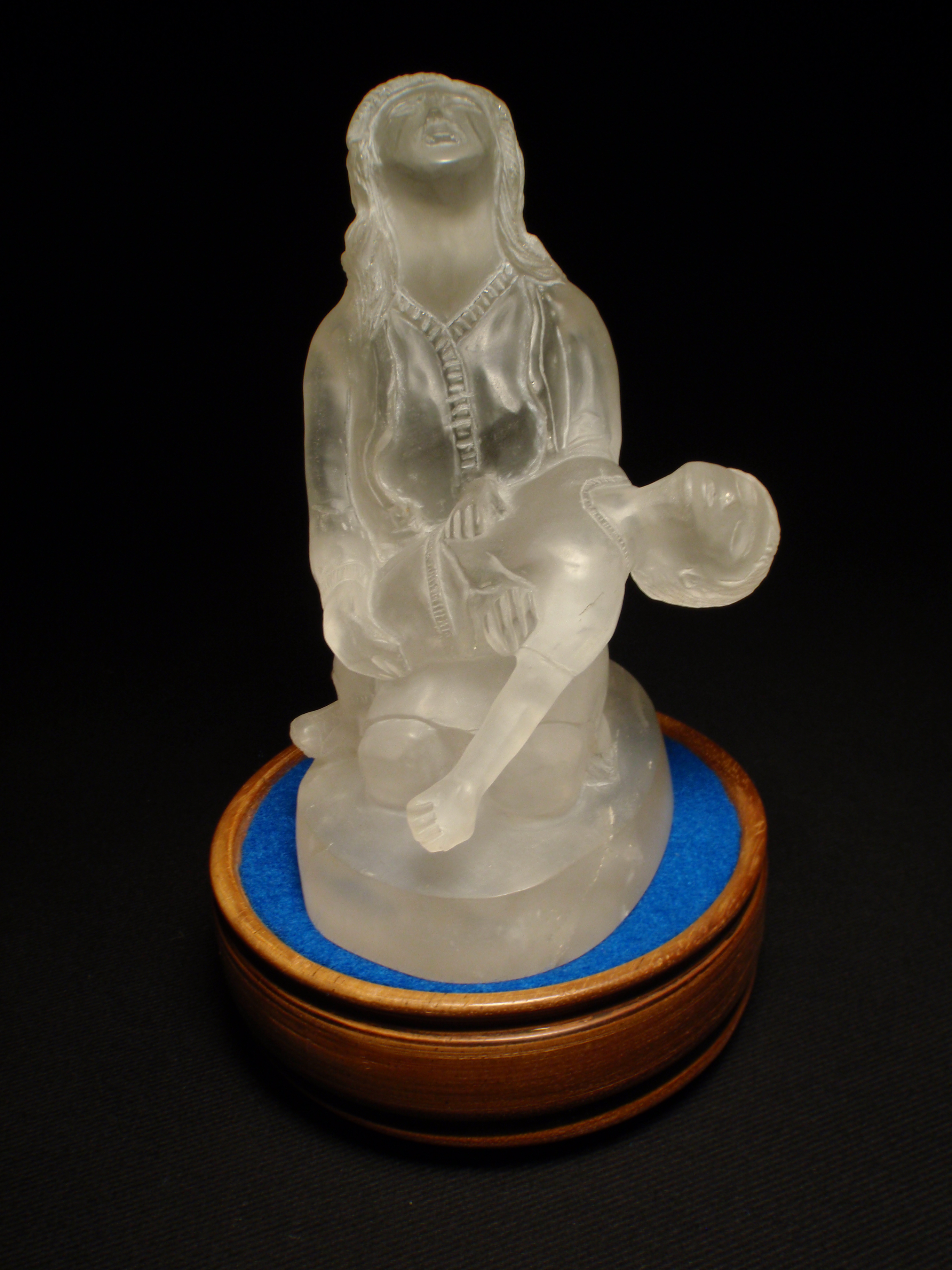 The carvings Grief and Blue Octopus were a temporary hiatus from jade during an early interval of depleted personal jade inventory. Grief was carved from a single Arkansas quartz crystal. Although a good carving material in its own right its appeal did not surpass that of nephrite. The entire carving is of a frosted surface but for the two polished tears streaming down the woman's cheeks. The intent of the carving was to project to the viewer raw emotion. Although that effect seems to have been achieved well enough, the subject is a bit macabre. No other attempt along such a theme has been made since.
The carvings Grief and Blue Octopus were a temporary hiatus from jade during an early interval of depleted personal jade inventory. Grief was carved from a single Arkansas quartz crystal. Although a good carving material in its own right its appeal did not surpass that of nephrite. The entire carving is of a frosted surface but for the two polished tears streaming down the woman's cheeks. The intent of the carving was to project to the viewer raw emotion. Although that effect seems to have been achieved well enough, the subject is a bit macabre. No other attempt along such a theme has been made since. 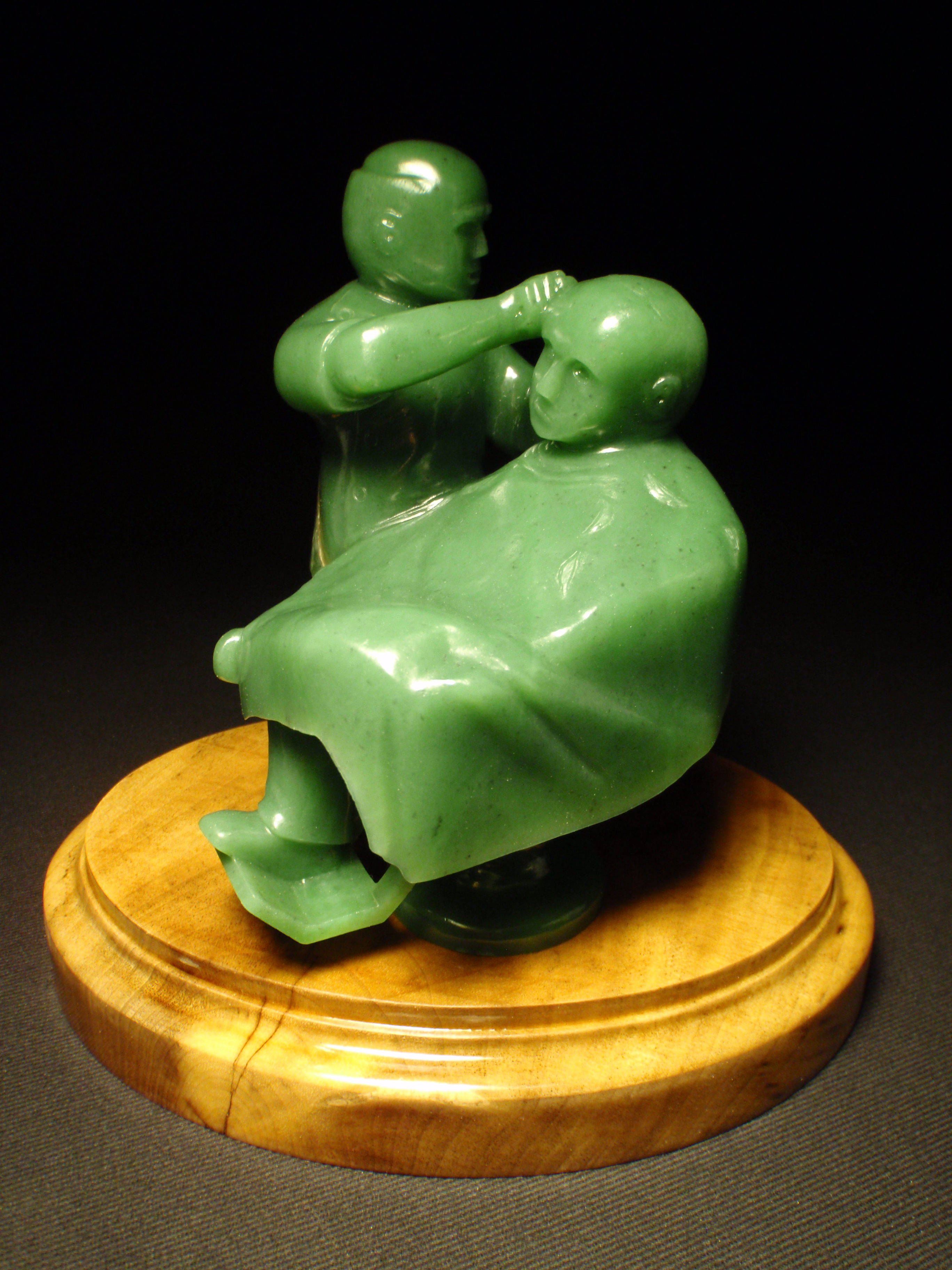
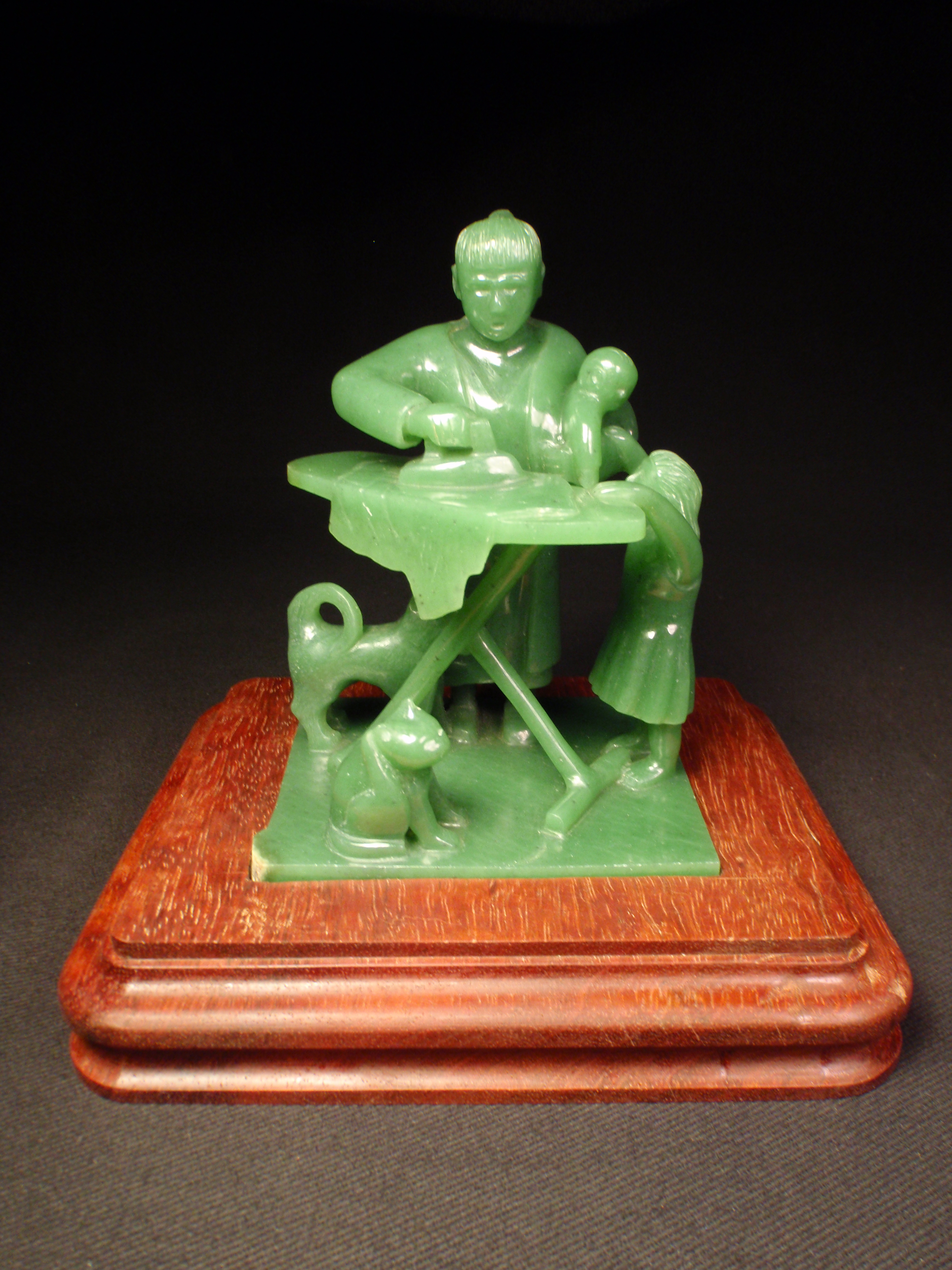
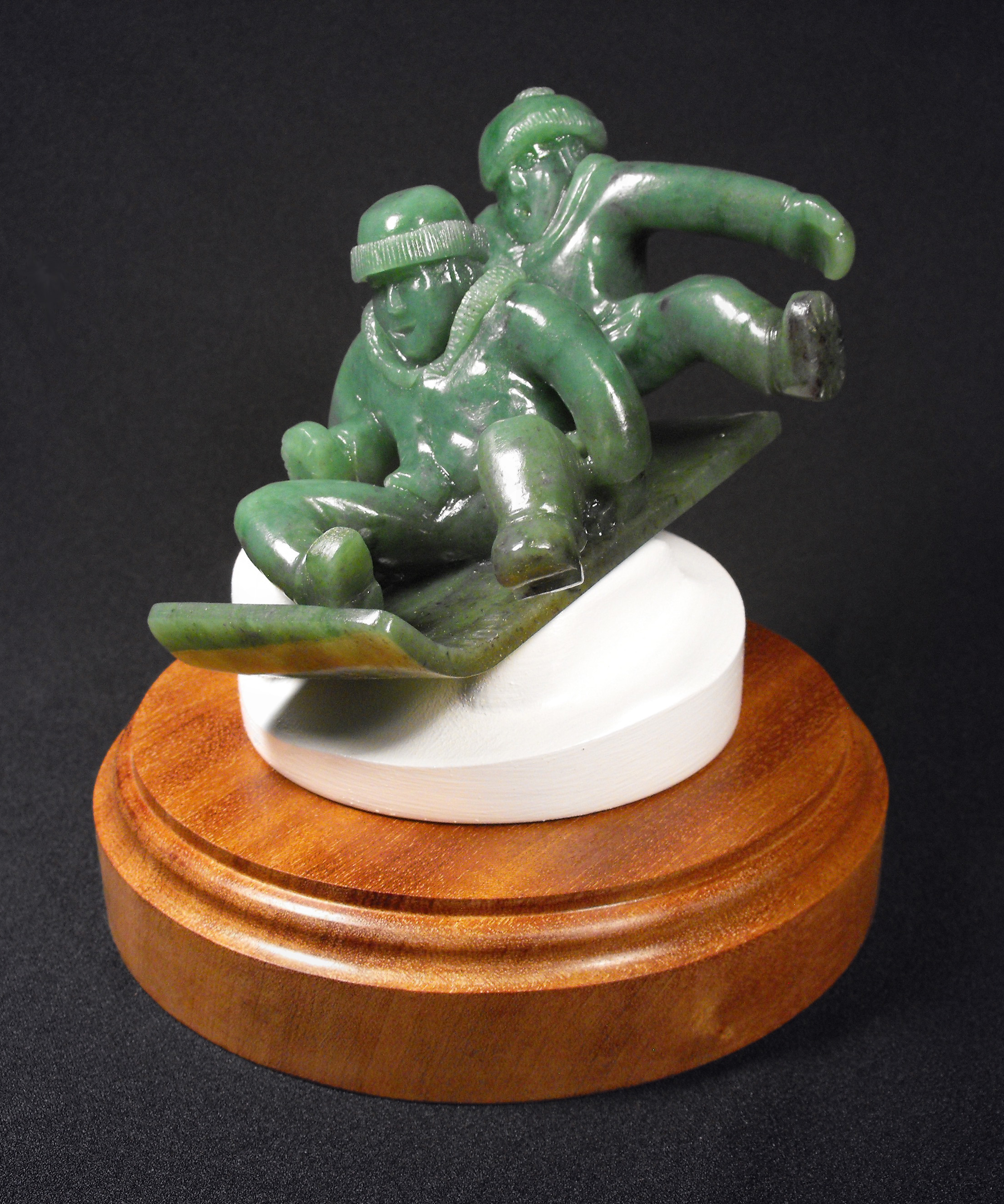
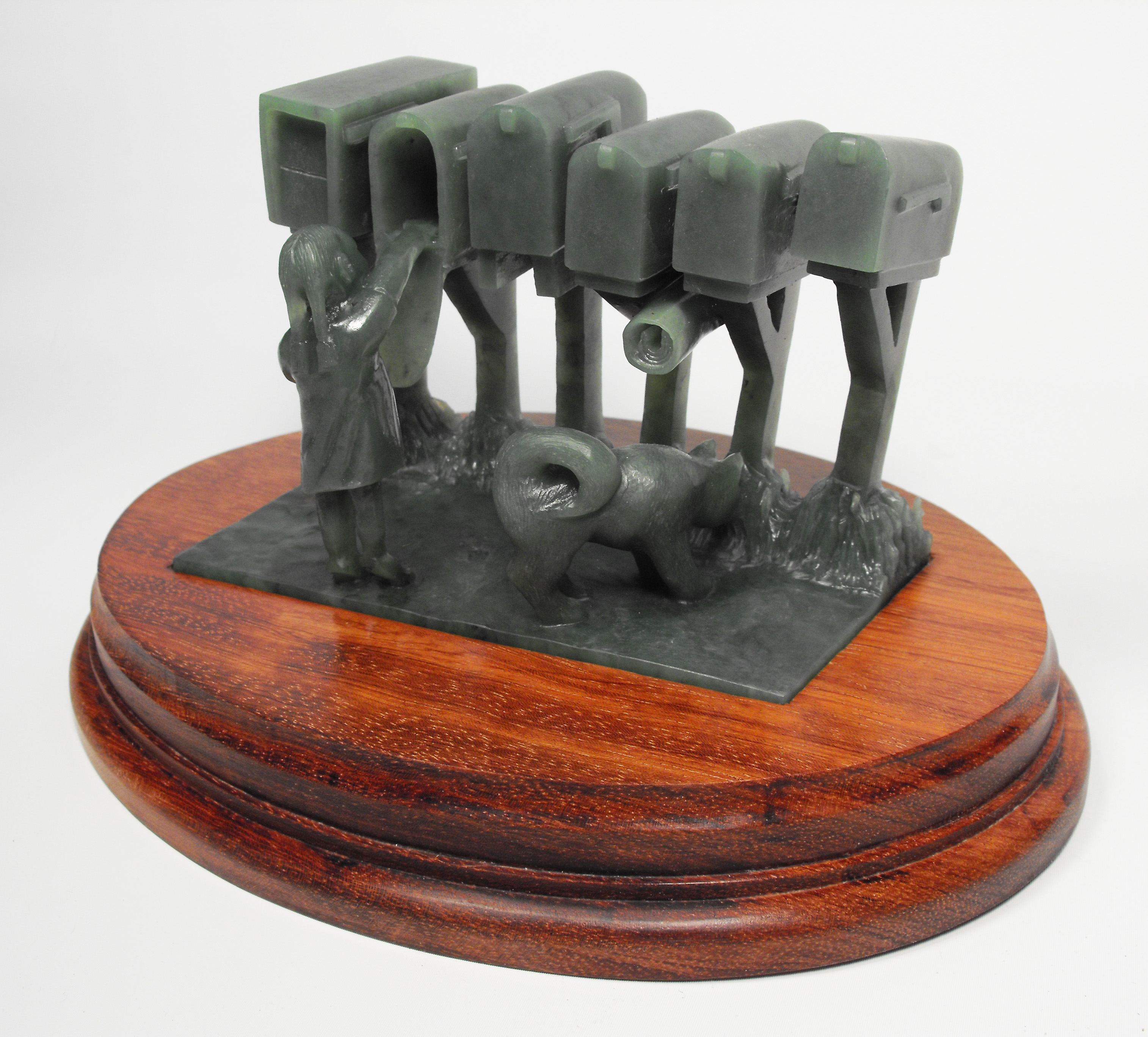 The Cameraman carving was a particularly challenging subject. A 1:1 model was crafted of wood and clay. Initial cuts were made with a saw then came the grinding. And more grinding. What turned out to be a constant dilemma was creating the tripod legs. Not only are there angles within each tripod leg that must match the others but that all three tripod legs required the same angles to arrive at the same corresponding platform position. No small number of templates were created from phenolic sheet (electronic insulative material) to act as guides. It was a painstaking process of grind, measure, compare, grind, measure, compare.
The Cameraman carving was a particularly challenging subject. A 1:1 model was crafted of wood and clay. Initial cuts were made with a saw then came the grinding. And more grinding. What turned out to be a constant dilemma was creating the tripod legs. Not only are there angles within each tripod leg that must match the others but that all three tripod legs required the same angles to arrive at the same corresponding platform position. No small number of templates were created from phenolic sheet (electronic insulative material) to act as guides. It was a painstaking process of grind, measure, compare, grind, measure, compare. 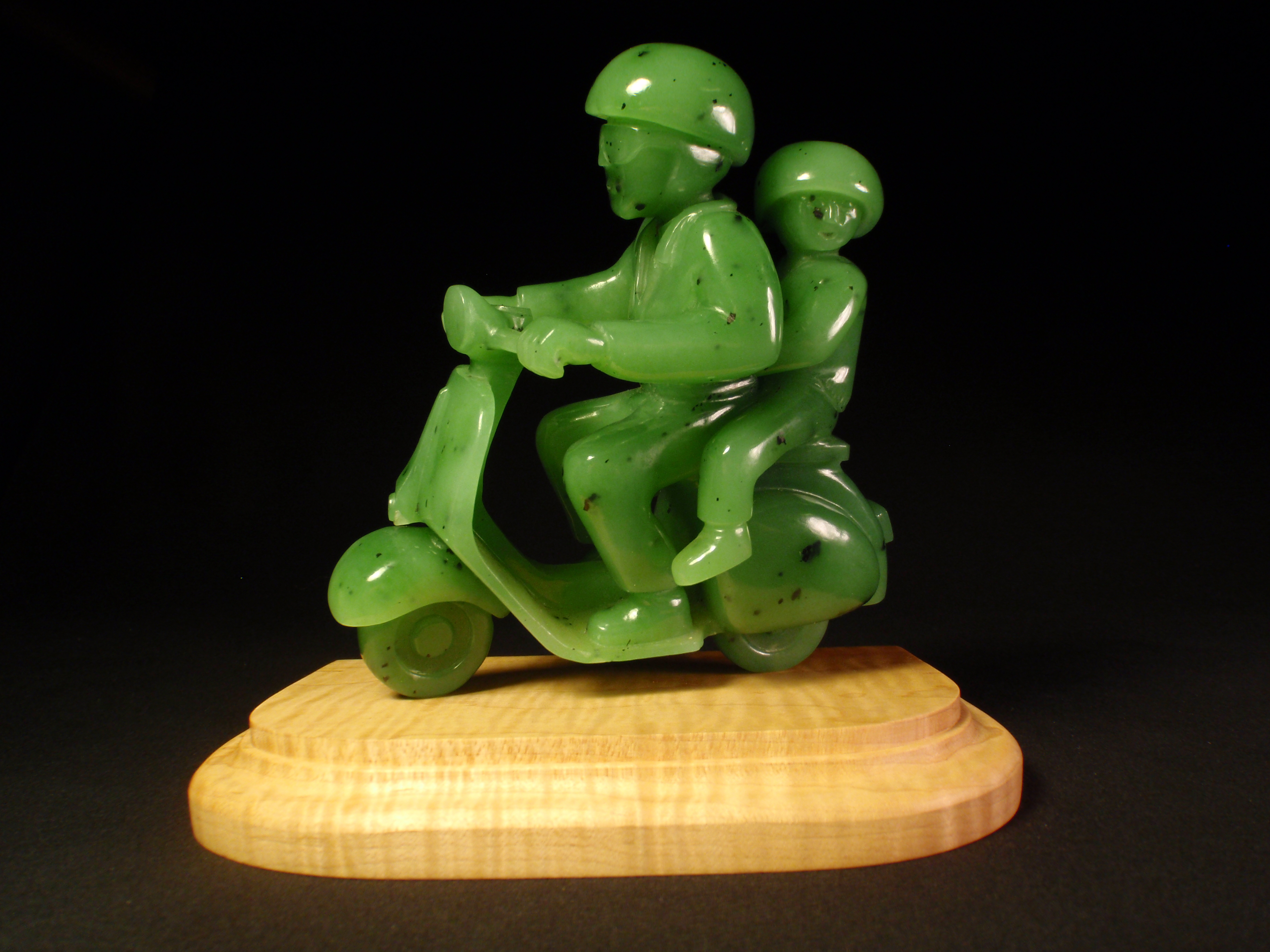 It had been the intention this year to begin depleting the years of accumulated jade scraps to use in smaller short interval projects such as amulets and jewelry items. For some reason these 73 year old hands could not resist embarking on yet another months long project. And only recently yet another jade candidate for a larger project somehow found its way into the shop inventory. Oh, but if there only were another forty years of opportunity.
It had been the intention this year to begin depleting the years of accumulated jade scraps to use in smaller short interval projects such as amulets and jewelry items. For some reason these 73 year old hands could not resist embarking on yet another months long project. And only recently yet another jade candidate for a larger project somehow found its way into the shop inventory. Oh, but if there only were another forty years of opportunity.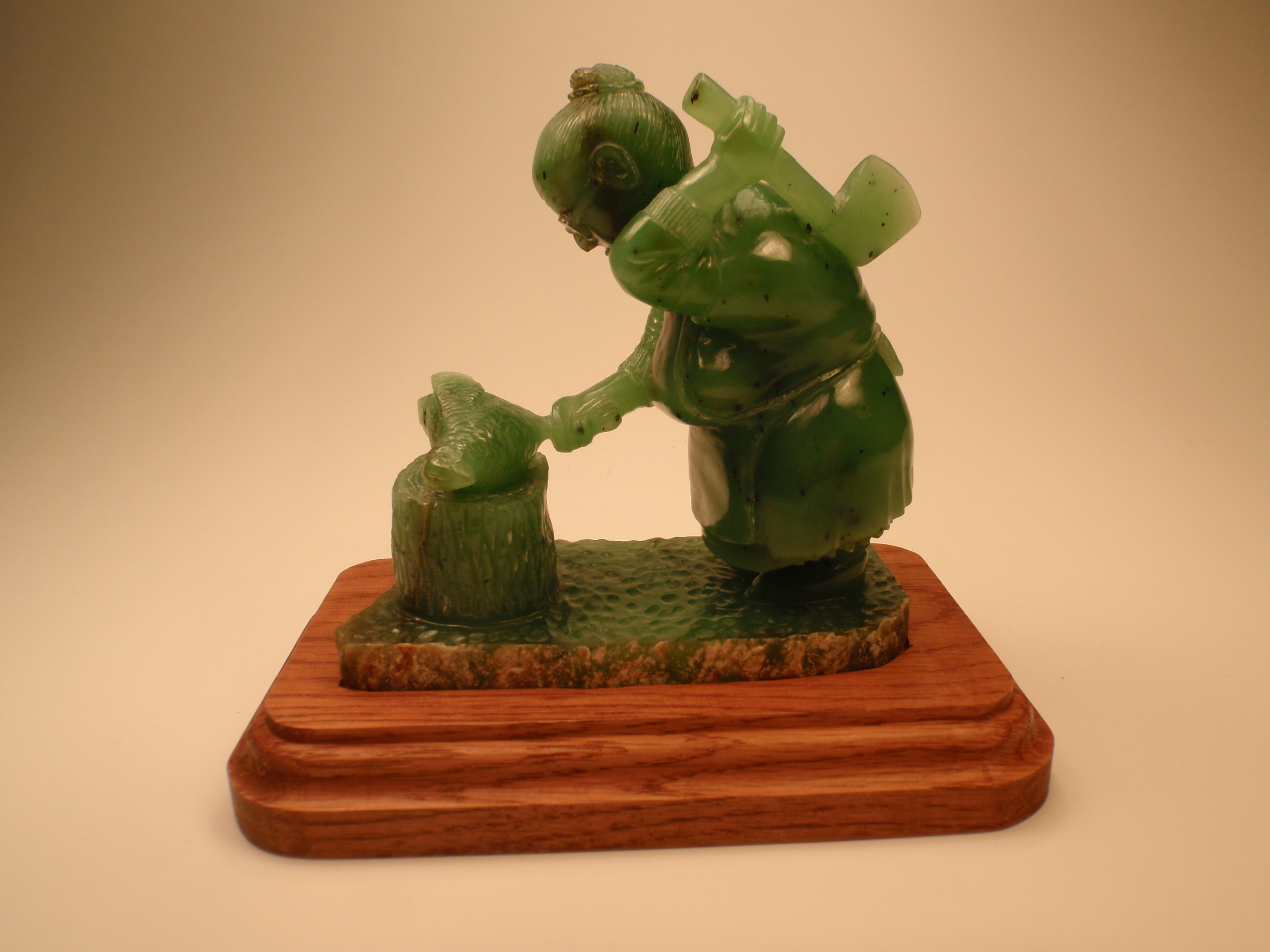
 Looking for something to do, I found the world of stone at Marenakos’ StoneFest 2011. I have done other artistic endeavors in my life but not sculpture and never stone as a medium. John Fisher was the carving instructor that year and those of you who know him can understand that I was hooked by the end of that week.
Looking for something to do, I found the world of stone at Marenakos’ StoneFest 2011. I have done other artistic endeavors in my life but not sculpture and never stone as a medium. John Fisher was the carving instructor that year and those of you who know him can understand that I was hooked by the end of that week.
 Early on I stepped into relief carving as a way to talk about a story or recognizable moment. Themes of mother and child in either animal or human form and interesting people, moments or relationships, draw me the most. I have come to love the challenge of perspective, shadow
Early on I stepped into relief carving as a way to talk about a story or recognizable moment. Themes of mother and child in either animal or human form and interesting people, moments or relationships, draw me the most. I have come to love the challenge of perspective, shadow  wonderful to become aware of the translucent quality of alabaster, the deep blacks
wonderful to become aware of the translucent quality of alabaster, the deep blacks 



 Who are you?
Who are you?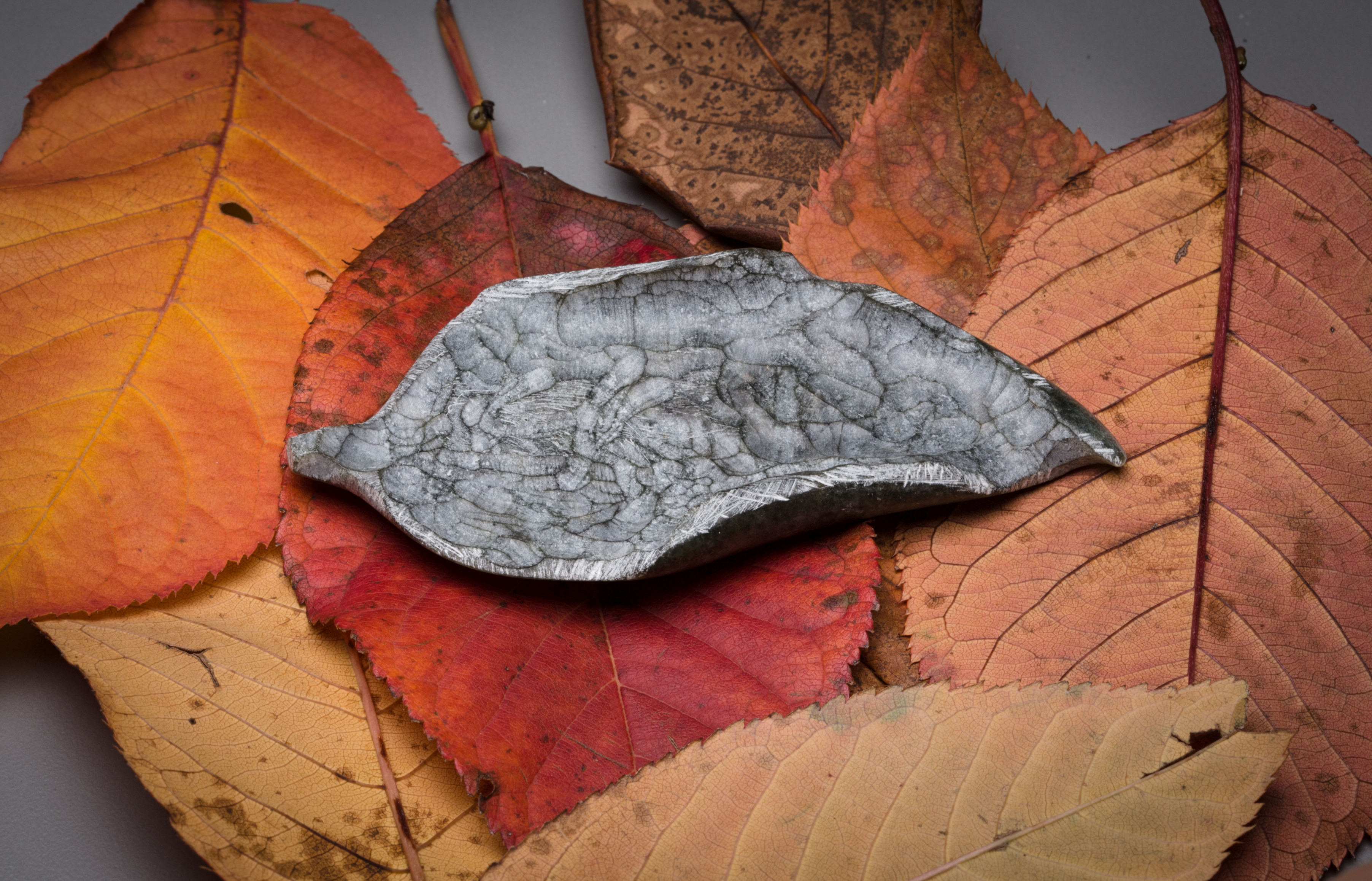 What is your life history as it relates to being an artist?
What is your life history as it relates to being an artist?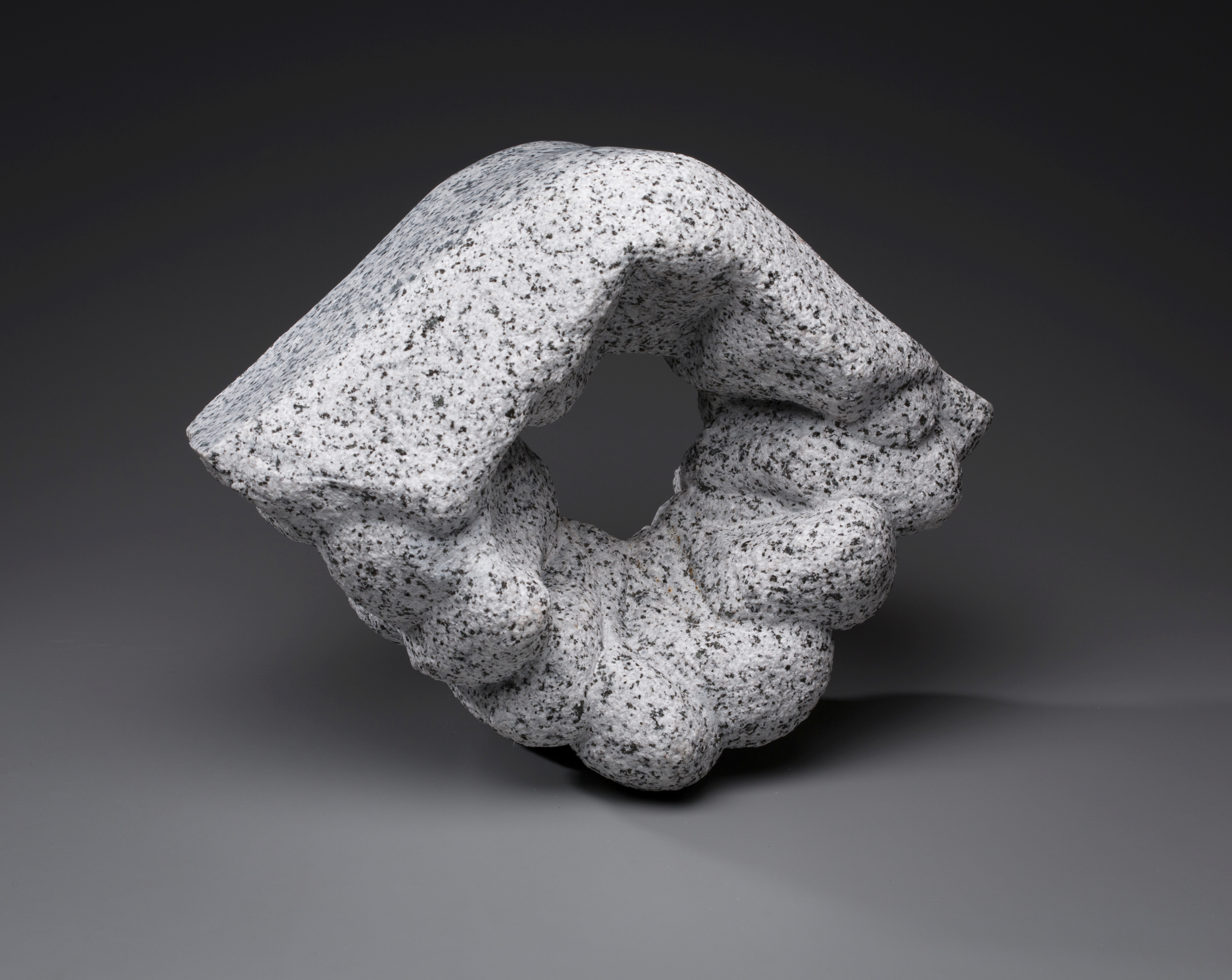 What key life experiences affected your direction in art?
What key life experiences affected your direction in art?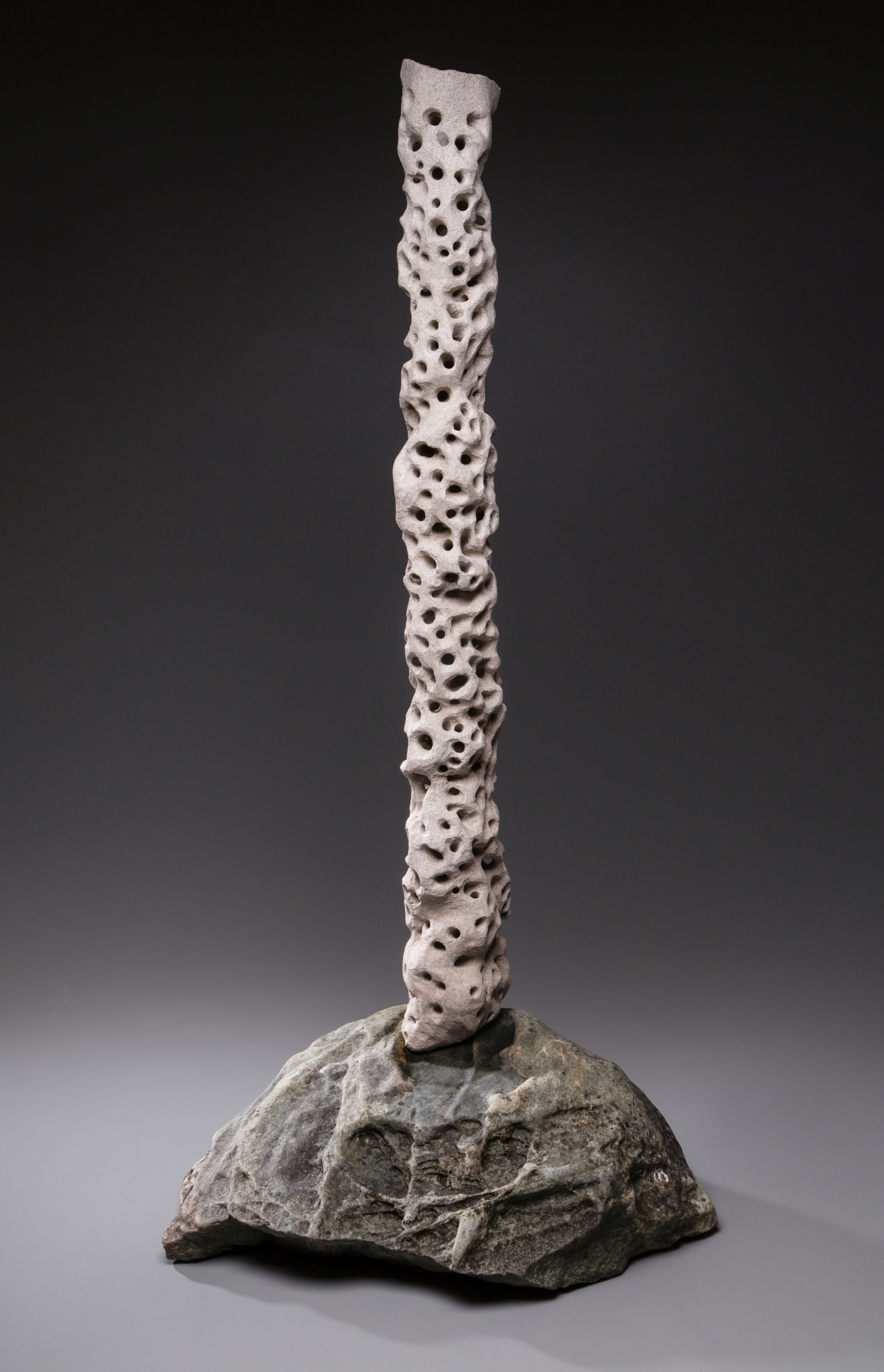 How does your art reflect your philosophy?
How does your art reflect your philosophy?

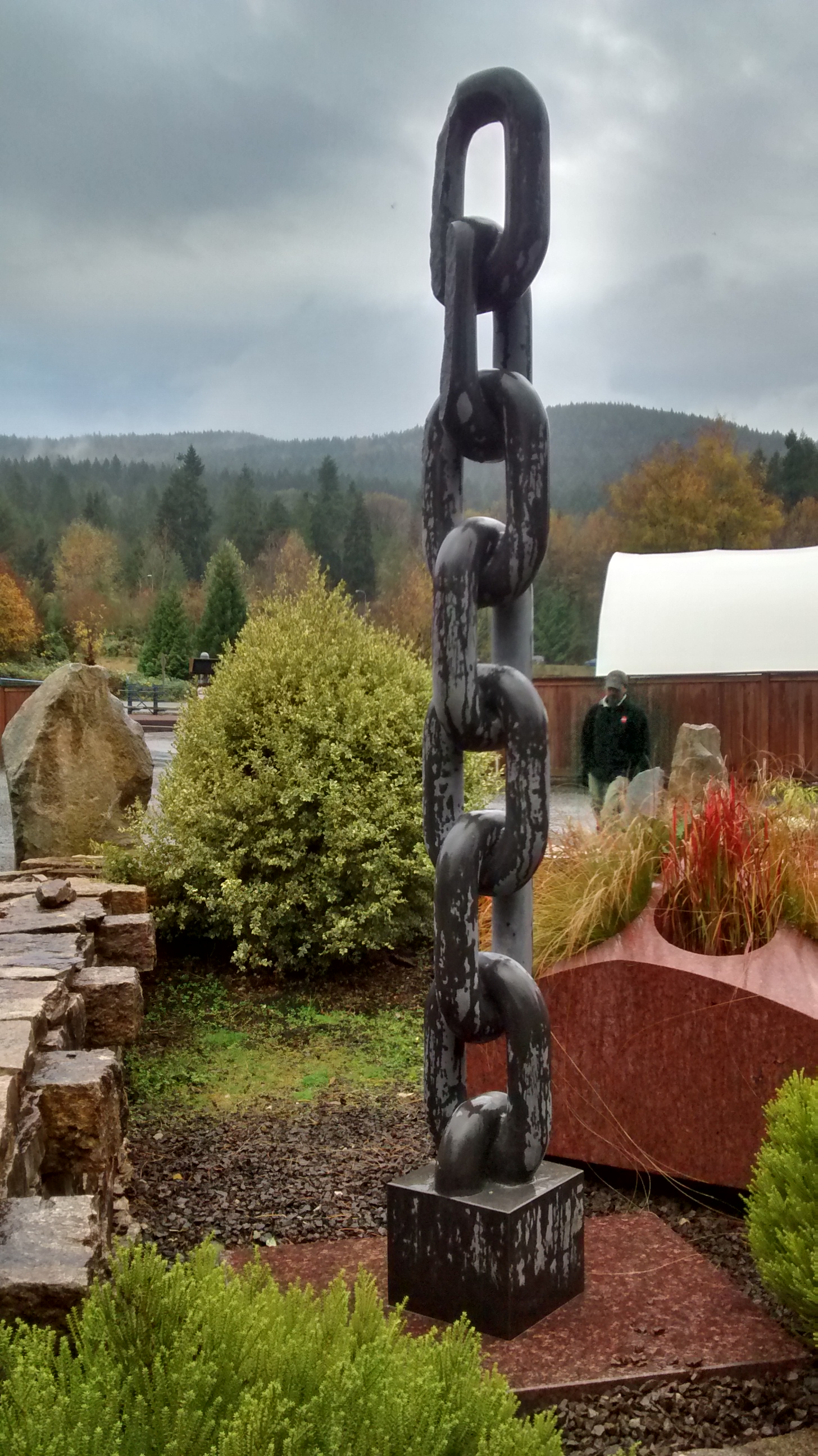 What have been your satisfactions in your life as an artist?
What have been your satisfactions in your life as an artist?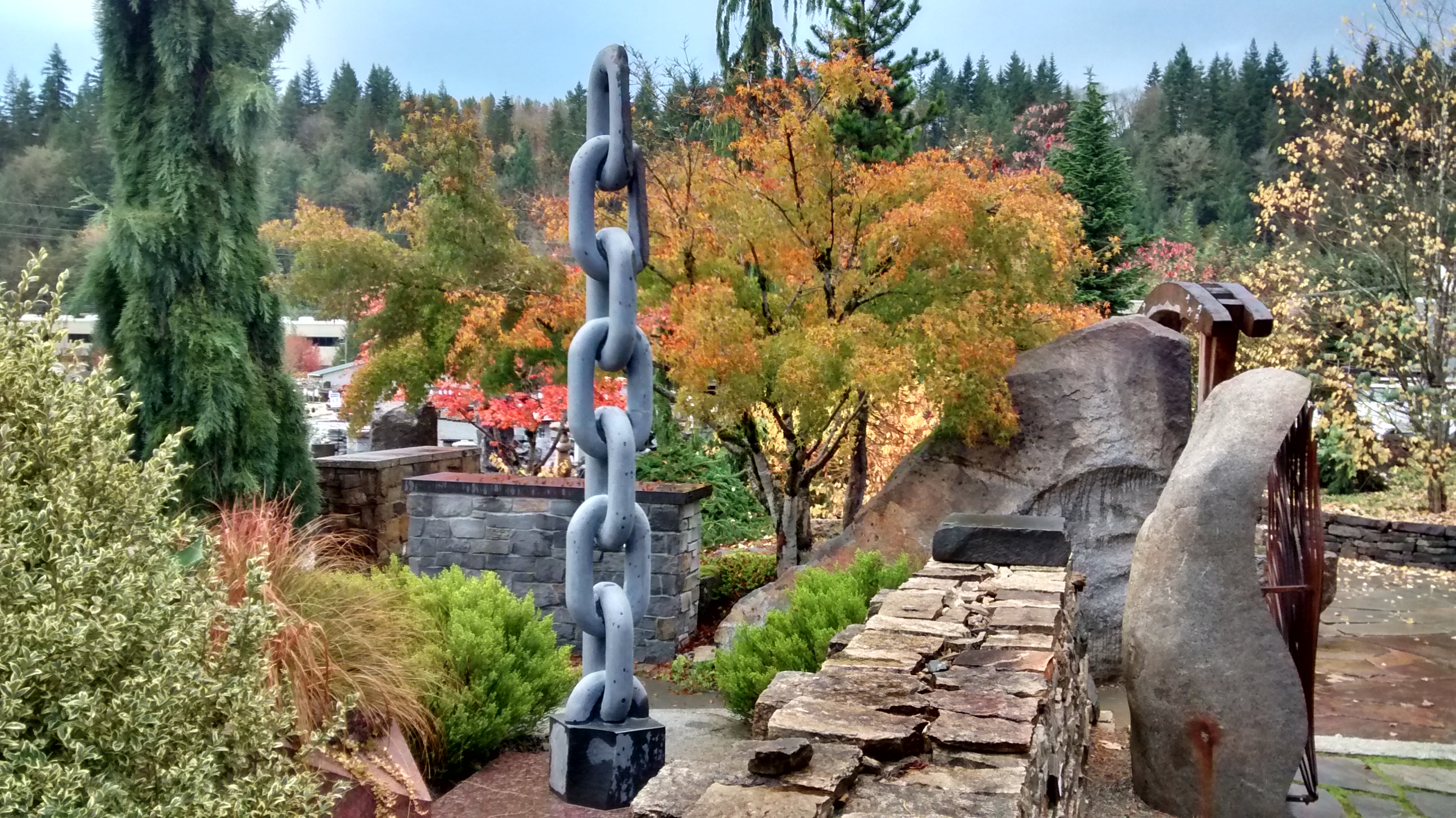

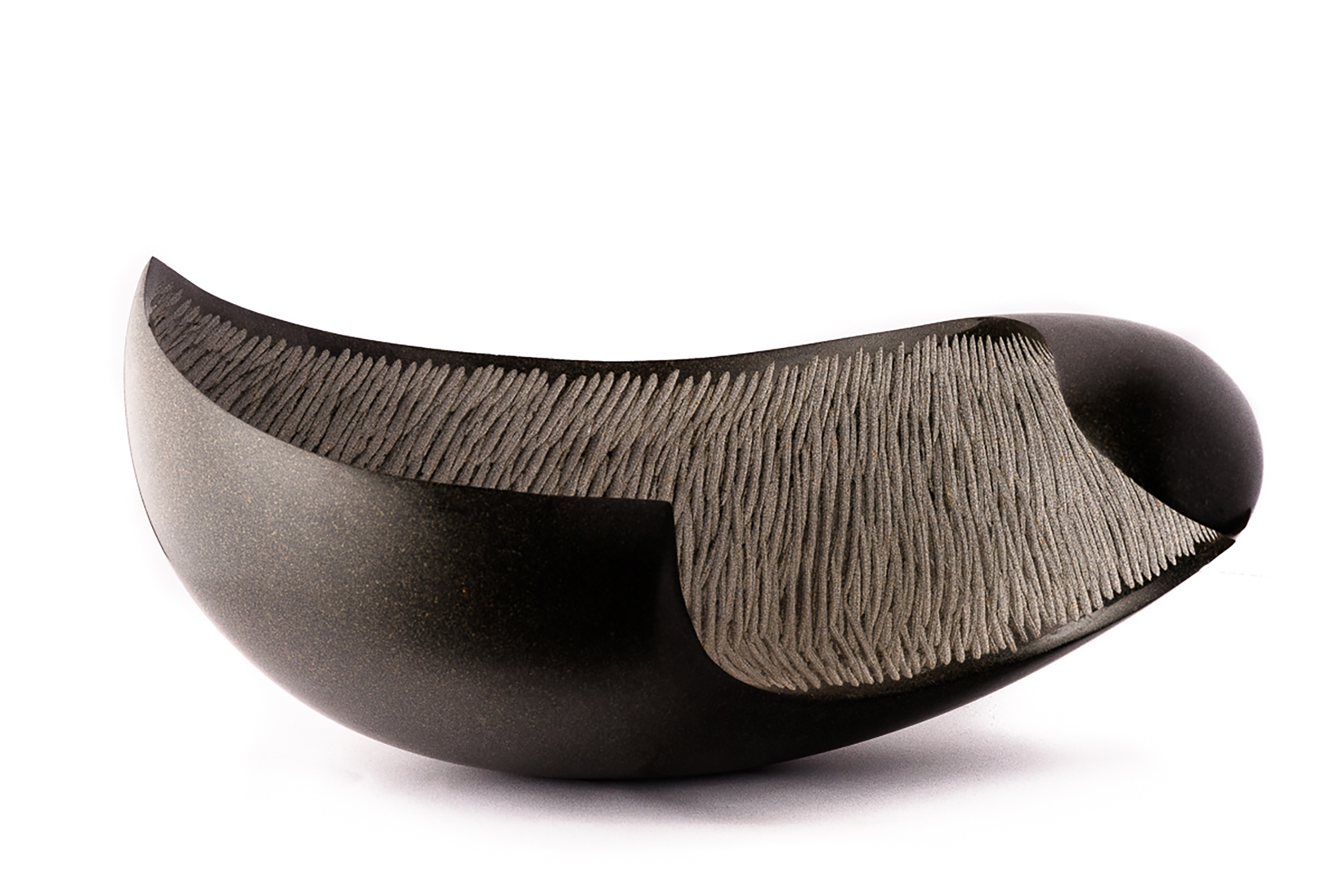

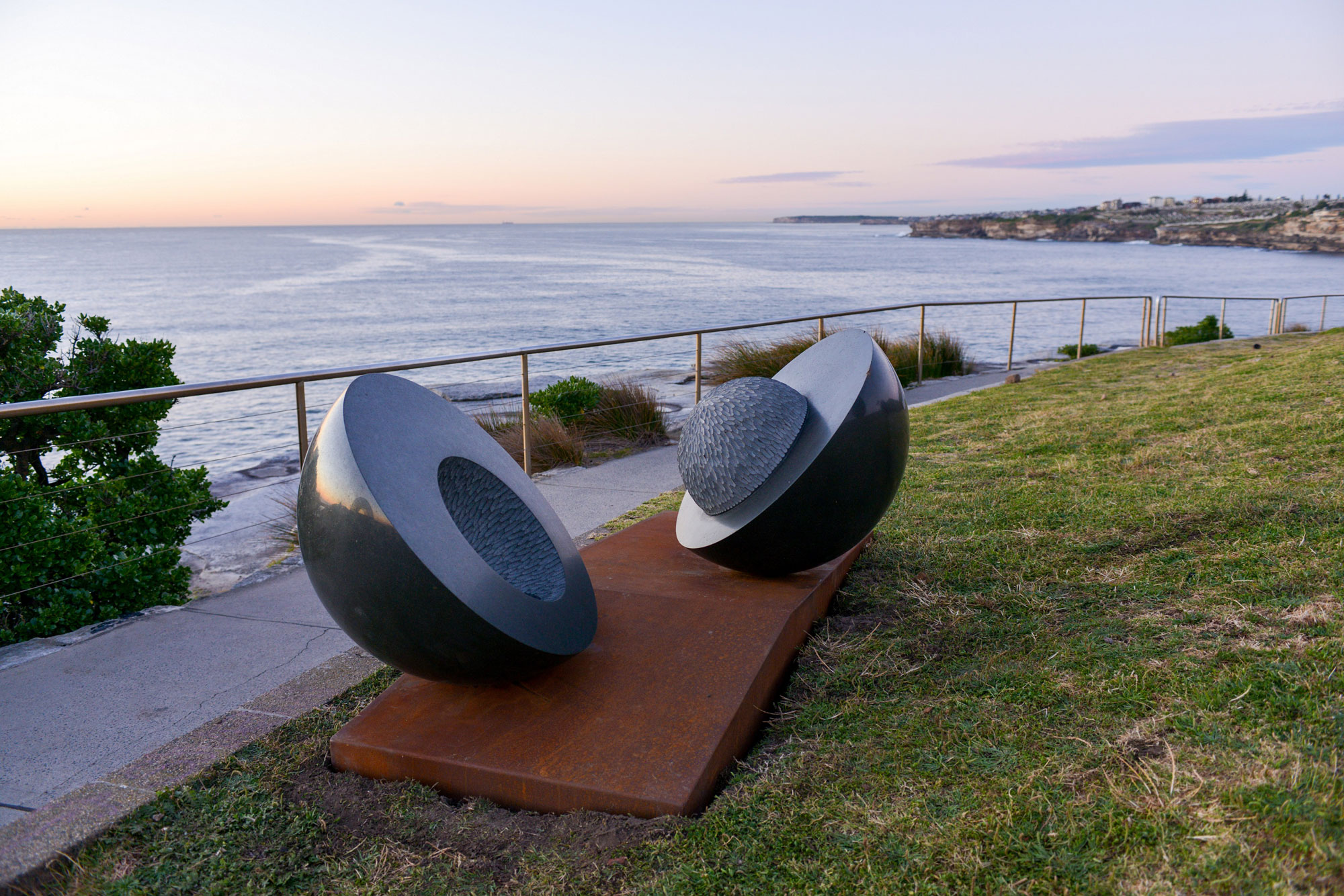
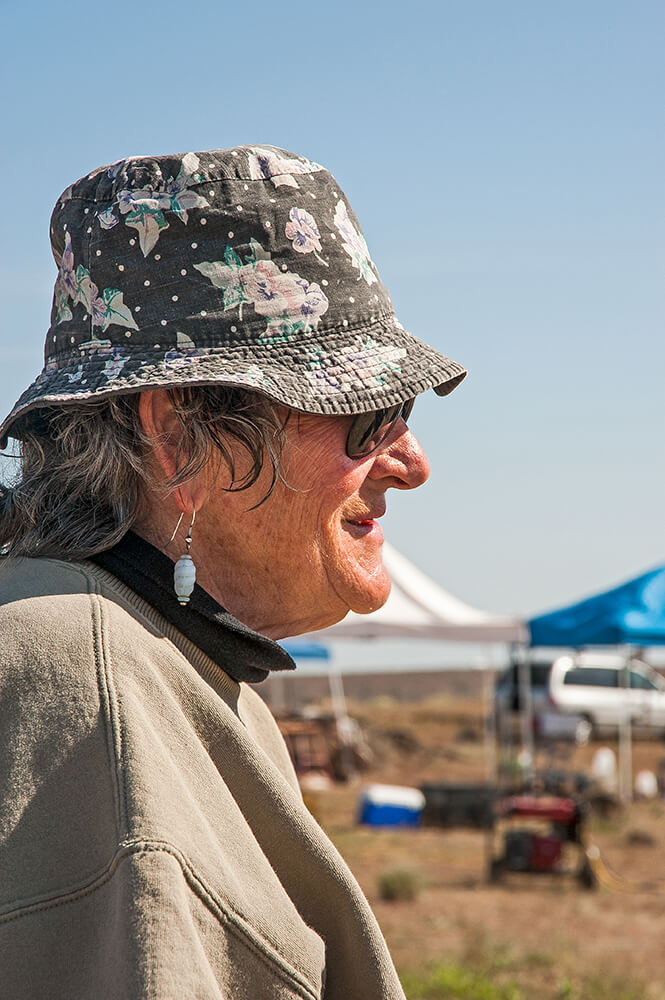 On January 28, Elaine MacKay died of emphysema at her home in The Dalles, Oregon. Sculpt Proud, Elaine
On January 28, Elaine MacKay died of emphysema at her home in The Dalles, Oregon. Sculpt Proud, Elaine

